

|
|
Doc (Blu-ray)
[Blu-ray]
Blu-ray B - United Kingdom - Signal One Review written by and copyright: Paul Lewis (6th March 2016). |
|
The Film
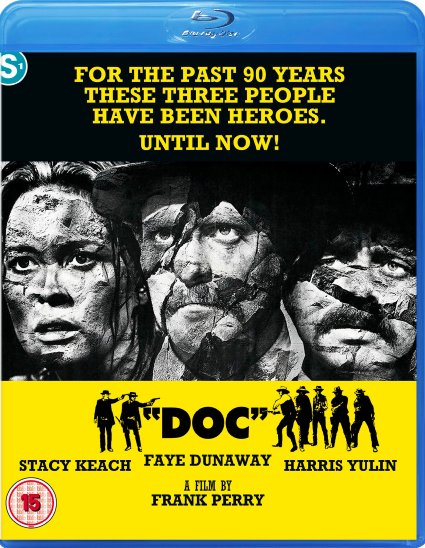 Doc (Frank Perry, 1971)  Released the same year as Robert Altman’s savage anti-Western McCabe and Mrs Miller, Frank Perry’s Doc (1971) offered a similar challenge to the romantic myths of the classic Hollywood Western as Altman’s picture, focusing on the relationship between Wyatt Earp and Doc Holliday, and their role in the legendary/infamous Gunfight at the O K Corral. Where Doc was originally intended to be shot in Southern California and Mexico, for reasons of economy Perry chose instead to shoot the picture in Almeria, Spain, where numerous westerns all’italiana/Continental Westerns – such as Sergio Leone’s Fistful of Dollars (1964), For a Few Dollars More (1965) and The Good, the Bad and the Ugly (1966) – had been filmed. Despite less than unanimous praise from critics at the time of its original release, Perry’s film earned its writer, New York Post journalist Pete Hamill, an award for his screenplay from the Western Writers of America. Released the same year as Robert Altman’s savage anti-Western McCabe and Mrs Miller, Frank Perry’s Doc (1971) offered a similar challenge to the romantic myths of the classic Hollywood Western as Altman’s picture, focusing on the relationship between Wyatt Earp and Doc Holliday, and their role in the legendary/infamous Gunfight at the O K Corral. Where Doc was originally intended to be shot in Southern California and Mexico, for reasons of economy Perry chose instead to shoot the picture in Almeria, Spain, where numerous westerns all’italiana/Continental Westerns – such as Sergio Leone’s Fistful of Dollars (1964), For a Few Dollars More (1965) and The Good, the Bad and the Ugly (1966) – had been filmed. Despite less than unanimous praise from critics at the time of its original release, Perry’s film earned its writer, New York Post journalist Pete Hamill, an award for his screenplay from the Western Writers of America.
After winning ‘goodtime girl’ Katie Elder (Faye Dunaway) from Ike Clanton (Michael Witney) in a card game in an adobe saloon, John ‘Doc’ Holliday (Stacy Keach) heads in to the town of Tombstone. Holliday has promised his friend Wyatt Earp (Harris Yulin), who has political ambitions, that he will help Earp rid Tombstone of the likes of the Clanton family. Earp sees this as an opportunity to ‘clean up’ in more than one way: with Holliday at his side, he will rid the town of undesirables, and have the town by the neck in terms of being able to control the gambling and other lucrative enterprises. However, Earp has an ongoing feud with the Clantons, which climaxes when one of their associates, Johnny Ringo (Fred Dennis), robs a stagecoach. Meanwhile, Doc teaches gunslinging to a young man (Denver John Collins) who Doc discovers later is allied with the Clantons, and Doc begins to question his own specific talent as a killer when this young man shoots another man dead. These events lead to escalating tensions that culminate in the gunfight at the O K Corral, which takes place between Wyatt Earp, his brothers Virgil (John Bottoms), Morgan (Phil Shafer) and James (Ferdinand Zogbaum), and the Clantons. The film begins ominously with a black screen, over which we hear sounds of a desert wind, horses grunting, a coyote howling and spurs jangling. Following this, we are presented with a shot from inside an adobe saloon – little more than a hut – as John ‘Doc’ Holliday steps out of the darkness and into the light (well, half-light) of the saloon. The combative tone is established immediately, as Doc spars verbally with the Mexican bartender, Jorge (Marshall Efron). ‘Whisky’, Doc asserts. ‘We ain’t got no whisky’, Jorge responds. ‘Cold beer’, Doc offers instead. ‘We ain’t got no cold beer’, Jorge tells the new customer. ‘What are they drinking?’, Doc asks, indicating Ike Clanton’s group, seated around a table and playing cards. ‘Warm beer’, Jorge says. ‘Give me a warm beer’, Doc demands. 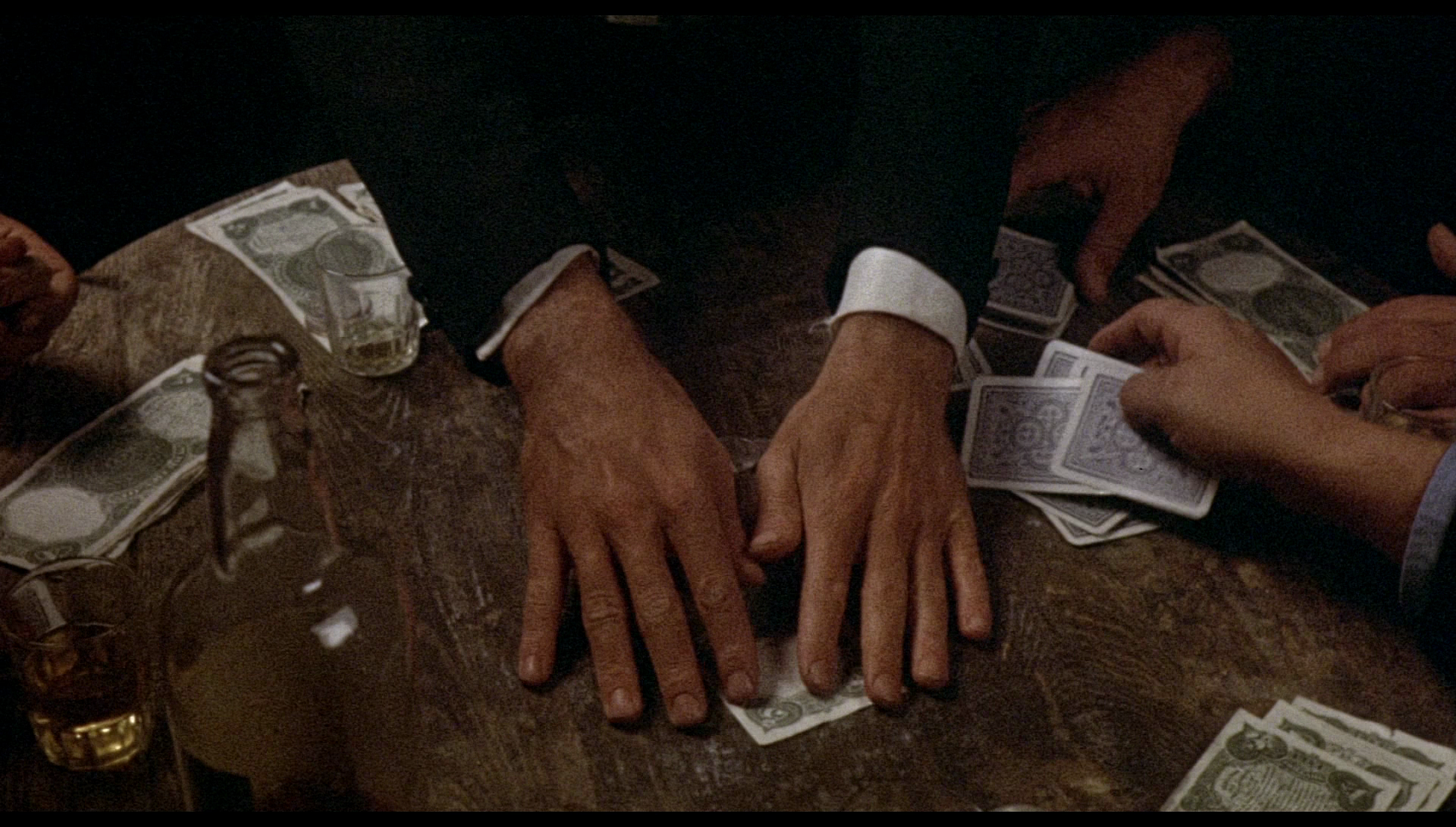 Indicating towards Katie Elder, Holliday offers to ‘Play you [Ike Clanton] for the lady’. The film’s deconstruction of romantic myths is underscored in Ike’s response: he tells Holliday sarcastically, ‘I ain’t gonna play you for the lady. Cause me and her’s in love. Gonna take her out to the ranch; have a big wedding. Raise cattle; live happy ever after’. Elder interrupts him, asserting, ‘You’re talking cowshit, Ike Clanton’. In the first of a number of similar sequences within the film, Holliday sits down to play cards with Ike Clanton: they play five card stud, the camera shooting down onto the table from overhead as the participants’ hands move across the table and the cards that are laid upon it. Doc deals the cards slowly, carefully. This becomes a visual leitmotif that reappears throughout the film: overhead shots of tables where games of cards are being played, hands moving across the cards, dealing and dealing out – a vivid metaphor for life in this barren, combative place. It’s a tense scene: the card game becomes a metonym for something much bigger, the sense of threat and violence palpable despite (or perhaps because of) the static camera and the steady movements of the hands of those involved in the game. The suggestion of violence through a simple card game recalls the films of Samuel Fuller and his tendency to represent what Martin Scorsese (in the 1996 documentary The Typewriter, the Rifle and the Movie Camera) referred to as ‘a kind of emotional violence, a violence to the soul’ through static camerawork and the use of visual metaphor and metonymy. Indicating towards Katie Elder, Holliday offers to ‘Play you [Ike Clanton] for the lady’. The film’s deconstruction of romantic myths is underscored in Ike’s response: he tells Holliday sarcastically, ‘I ain’t gonna play you for the lady. Cause me and her’s in love. Gonna take her out to the ranch; have a big wedding. Raise cattle; live happy ever after’. Elder interrupts him, asserting, ‘You’re talking cowshit, Ike Clanton’. In the first of a number of similar sequences within the film, Holliday sits down to play cards with Ike Clanton: they play five card stud, the camera shooting down onto the table from overhead as the participants’ hands move across the table and the cards that are laid upon it. Doc deals the cards slowly, carefully. This becomes a visual leitmotif that reappears throughout the film: overhead shots of tables where games of cards are being played, hands moving across the cards, dealing and dealing out – a vivid metaphor for life in this barren, combative place. It’s a tense scene: the card game becomes a metonym for something much bigger, the sense of threat and violence palpable despite (or perhaps because of) the static camera and the steady movements of the hands of those involved in the game. The suggestion of violence through a simple card game recalls the films of Samuel Fuller and his tendency to represent what Martin Scorsese (in the 1996 documentary The Typewriter, the Rifle and the Movie Camera) referred to as ‘a kind of emotional violence, a violence to the soul’ through static camerawork and the use of visual metaphor and metonymy.
The card game ends with Ike Clanton drawing for his gun. Doc, however, is faster. ‘You can reach for it if you want, cowboy’, Doc warns Ike, ‘But if you do, you’re gonna end up with two assholes, and one of ‘em’s gonna be right between your eyes’. Ike backs down but issues Doc with his own warning: ‘I’ll see you in Tombstone, dude’, Ike promises Doc. With this strange, abstract and symbolic opening sequence, the film’s battle lines are drawn and the conflicts that will echo throughout the picture are established. The sequence ends with Doc being left with Kate and Jorge. Doc demands water from Jorge because ‘I gotta wash this bitch’. The next morning, after Doc and Kate have spent the night in one of the rooms in the adobe saloon, Kate informs Doc that ‘This is the ass end of the West’. ‘It ain’t even got a name’, Doc responds, reinforcing the symbolic potential of the isolated adobe saloon, as if it were a liminal/‘inbetween’ space, like a form of Purgatory. Doc offers to give Kate a ride to Tombstone, but on the journey they discover that as they slept, Jorge has swapped the water in Doc’s canteen for vinegar; it’s a cruel, spiteful act that defines the cruel, spiteful place in which these two characters find themselves. 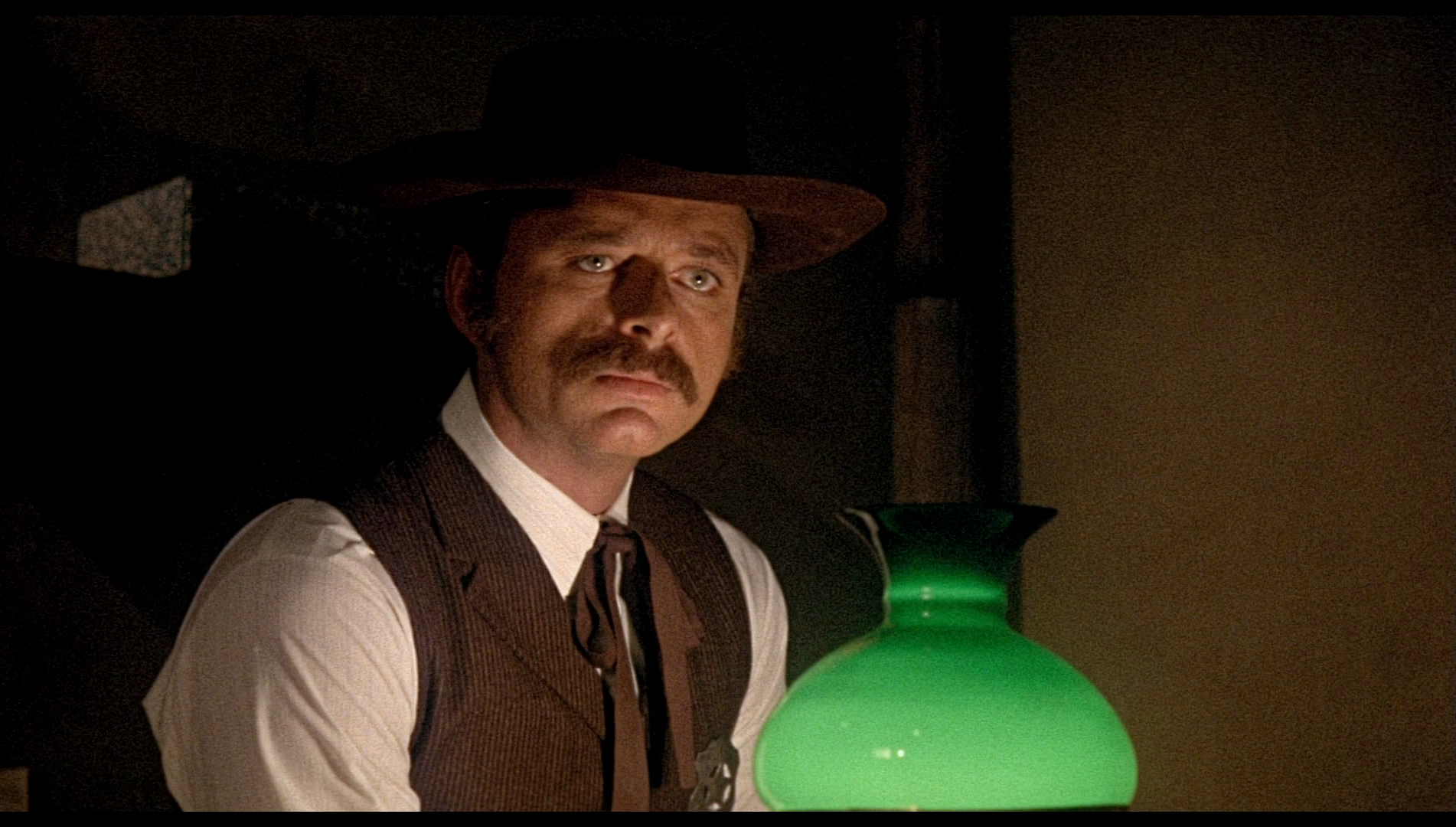 In Tombstone, Doc meets with Earp, and the lines are drawn between the Earps and the Clantons. Doc’s first conversation with Earp, who has called his friend Doc to town to back his play (with the cognisance that Doc is a known and feared gunfighter), delineates the moral righteousness that resides within Earp; it’s this that, as the film progresses, begins to alienate Doc from his former friend. In their first conversation, Doc refers to the Clantons and Johnny Ringo, telling Doc that they are ‘Trouble makers [….] They’re bad people, John’. However, Doc reminds Earp that ‘if it weren’t for bad people, what would you do for a living, Marshal?’ Earp outlines his plan to eradicate the ‘trouble makers’ from Tombstone, thereby leaving the town ‘wide open’ for exploitation by the Earps and Holliday: ‘I run the law; you run the gambling. We’ll both end up rich. Very rich’, Earp tells his friend. ‘We sound like bad people, Wyatt’, Doc says, reminding Earp of his previous passing of moral judgement towards the Clantons. ‘We are, John’, Earp says in response to this. In Tombstone, Doc meets with Earp, and the lines are drawn between the Earps and the Clantons. Doc’s first conversation with Earp, who has called his friend Doc to town to back his play (with the cognisance that Doc is a known and feared gunfighter), delineates the moral righteousness that resides within Earp; it’s this that, as the film progresses, begins to alienate Doc from his former friend. In their first conversation, Doc refers to the Clantons and Johnny Ringo, telling Doc that they are ‘Trouble makers [….] They’re bad people, John’. However, Doc reminds Earp that ‘if it weren’t for bad people, what would you do for a living, Marshal?’ Earp outlines his plan to eradicate the ‘trouble makers’ from Tombstone, thereby leaving the town ‘wide open’ for exploitation by the Earps and Holliday: ‘I run the law; you run the gambling. We’ll both end up rich. Very rich’, Earp tells his friend. ‘We sound like bad people, Wyatt’, Doc says, reminding Earp of his previous passing of moral judgement towards the Clantons. ‘We are, John’, Earp says in response to this.
The conflict between Wyatt Earp and the Clantons is largely personal in nature, and after Earp and Doc have ridden out to the Clantons’ spread to ask them about the stagecoach robbery (conducted by Ringo, in which £80,000 has been stolen), Earp is challenged by Clanton to a fistfight. The two men remove their gunbelts and wrestle in the dirt. Ike wins, telling Earp ‘You ain’t so much without them guns, are you, Earp? You ain’t worth shit’. Following this, Earp is bent on destroying the Clantons on a simply point of pride. As Doc tends to Earp’s wounds, Earp promises ‘I’m gonna kill him’. ‘Let it go, Wyatt’, Doc advises his friend. ‘I’m gonna have to kill him’, Earp responds. Earp later suggests to his brother Virgil that he may make a deal with Ike, that if Ike hands over Johnny Ringo, Ike can have the reward. ‘He gets the money; we get the credit’, Wyatt suggests to Virgil, ‘We can clean up Tombstone’. ‘You mean, clean out Tombstone’, Virgil offers dryly. The exchange highlights the way in which Wyatt is motivated by greed and ambition, and his actions (particularly those against the Clantons) seem to be dictated by personal grudges. Despite this, in public Earp wraps these prejudices up in fancy rhetoric, in order to achieve his political goals: in a speech delivered to the townsfolk, Wyatt declares that ‘There’s only one way to get rid of the gun; that’s to use the gun. Law’s got to be enforced’. After the gunfight at the O K Corral, the Clantons are all dead and Morgan Earp has also been killed; Wyatt exploits his brother’s death as an opportunity for political grandstanding, deflecting the blame for the shootout by telling the gathered crowd in regard to the violence that he himself has caused, ‘They [the Clantons] killed my brother. They came in this town looking for trouble. They came in here to destroy everything that we’ve been trying to build together […..] From this, we’re gonna build a better town. We’re gonna build a better Tombstone’. The scene is a savage indictment of political rhetoric-as-call-to-violence, the crux of Hamill’s screenplay’s criticism of the war in Vietnam, and arguably as relevant today as it was in 1971. 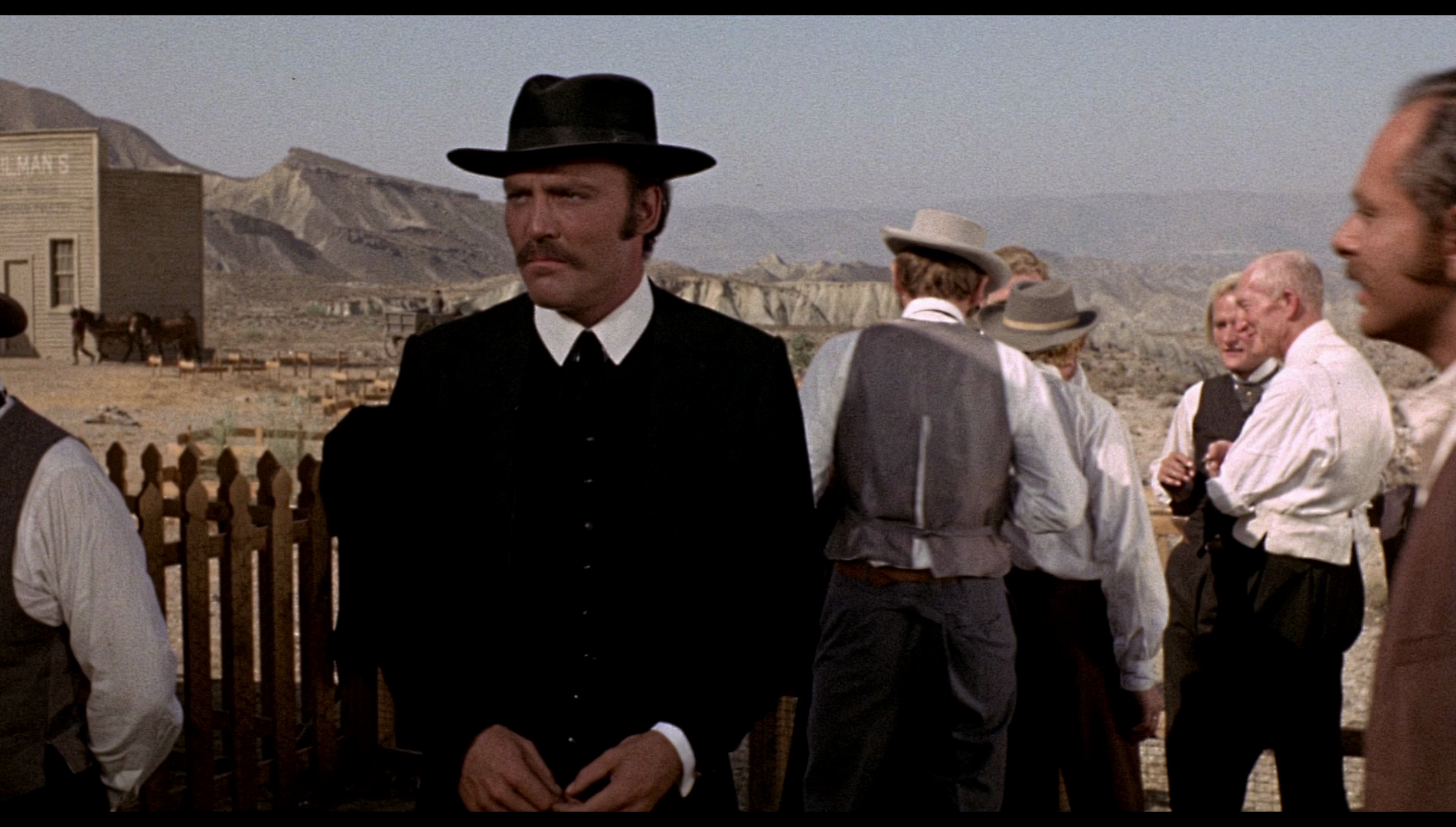 The legend of Doc Holliday, and his association with violence and death, dogs him. From their first meeting, Katie Elder is able to tell that Holliday is a gunfighter by ‘The way you walk with your right hand hanging loose; the way you look around the room like there might be a rattler hiding in the pickle barrel’. In town, during a festival, various characters can be heard talking offscreen over shots of Holliday and the Earps, foregrounding Holliday’s status as a living legend. ‘All dressed in black, Pa’, a boy can be heard declaring, ‘Al in black. That’s really him, Doc Holliday?’ ‘That’s him, son’, the father responds, ‘Take a good look, and remember’. Holliday’s talent as a gunfighter draws the attention of a young man played by Denver John Collins, who is later revealed to be allied with the Clantons. The young man asks Holliday to teach him how to shoot. Holliday takes the kid to the outskirts of town, offering him some lessons in handling a gun; here, Holliday bursts some of the myths associated with gunfighting. ‘Fanning’s fast but not very accurate’, he tells the youth, ‘And accuracy is much more important than speed’. Holliday tells the boy about his background: his training as a dentist in Baltimore and the doctors’ orders that he travel out West ‘for my health’. ‘You ever go back home?’, the boy asks. ‘Every night’, Holliday replies gnomically. Later, the youth will murder another man within the limits of Tombstone, resulting in him being thrown in jail; Holliday bails him out, to the annoyance of Earp. At one point, Doc asks the youth, ‘What are you gonna do with your life? Don’t you have any ambition?’ ‘Yes, Mr Holliday’, the young man replies. ‘What is it?’, Doc asks. ‘I wanna be like you’, the boy says. Doc looks visibly perturbed and reacts angrily to this, telling the youth to ‘Get the hell out of here’. The legend of Doc Holliday, and his association with violence and death, dogs him. From their first meeting, Katie Elder is able to tell that Holliday is a gunfighter by ‘The way you walk with your right hand hanging loose; the way you look around the room like there might be a rattler hiding in the pickle barrel’. In town, during a festival, various characters can be heard talking offscreen over shots of Holliday and the Earps, foregrounding Holliday’s status as a living legend. ‘All dressed in black, Pa’, a boy can be heard declaring, ‘Al in black. That’s really him, Doc Holliday?’ ‘That’s him, son’, the father responds, ‘Take a good look, and remember’. Holliday’s talent as a gunfighter draws the attention of a young man played by Denver John Collins, who is later revealed to be allied with the Clantons. The young man asks Holliday to teach him how to shoot. Holliday takes the kid to the outskirts of town, offering him some lessons in handling a gun; here, Holliday bursts some of the myths associated with gunfighting. ‘Fanning’s fast but not very accurate’, he tells the youth, ‘And accuracy is much more important than speed’. Holliday tells the boy about his background: his training as a dentist in Baltimore and the doctors’ orders that he travel out West ‘for my health’. ‘You ever go back home?’, the boy asks. ‘Every night’, Holliday replies gnomically. Later, the youth will murder another man within the limits of Tombstone, resulting in him being thrown in jail; Holliday bails him out, to the annoyance of Earp. At one point, Doc asks the youth, ‘What are you gonna do with your life? Don’t you have any ambition?’ ‘Yes, Mr Holliday’, the young man replies. ‘What is it?’, Doc asks. ‘I wanna be like you’, the boy says. Doc looks visibly perturbed and reacts angrily to this, telling the youth to ‘Get the hell out of here’.
The suggestion is that in the youth, Doc sees his own potential for violence, or perhaps more simply himself as a young man, on a path to a neverending cycle of gun violence. When Doc bails out the youth after the boy has shot a man in the streets of Tombstone, Wyatt confronts Doc, telling him that the situation has ‘Caused some trouble with the Clantons’. ‘Trouble with the Clantons? Your trouble, not mine’, Doc responds, adding that ‘You know, you’ve changed, Wyatt. I don’t understand you anymore’. ‘I don’t understand you’, Wyatt declares, ‘You know, there was a time when my trouble was your trouble. And yours was mine’. Wyatt’s words hint at the homoerotic subtext that so many critics of the film find troubling. ‘Times have changed’, Doc tells his old friend before underscoring his dislike of violence and his fear that, in the words of Shane in George Stevens’ Shane (1953) ‘it’s a brand, a brand that sticks’: ‘It’s different [….] I got to learn that I’m not gonna live forever, and I got to learn that I’m sick and tired of killing. I’m sick of it. I ‘m sick of seeing young kids gun down old men for bullshit reasons. I don’t want that anymore, Wyatt. It doesn’t make any sense to me [….] I want to leave something behind, Wyatt. I want to live’.  Towards the end of the film, the youth comes to Holliday and warns him that the Clanton family are planning to come into town to challenge the Earps (‘Because I don’t want you to die, Mr Holliday’, the kid offers). Holliday is presented with a choice: to flee Tombstone and avoid a fight which isn’t his, or to assist his old friend Earp – even though he believes Earp to be misguided. Holliday opts for the latter, walking with the Earp brothers to their confrontation with the Clantons at the O K Corral. After the Clantons have been killed, Holliday faces down the youth, now unarmed and clearly not a threat to Holliday or the surviving Earps. Holliday hesitates before shooting the boy; a medium shot shows the youth’s death, the bullet punching a hole in his chest. Presented in slow-motion, the moment carries symbolic weight, and is reminiscent of the scenes in the films of Sam Peckinpah in which characters demonstrate their self-loathing by shooting mirrors carrying their reflections (Pike Bishop at the end of The Wild Bunch, 1969; Pat Garrett after killing Billy the Kid in Pat Garrett and Billy the Kid, 1973; Bennie after siding with the American capitalist-imperialists over his lover Elita in Bring Me the Head of Alfredo Garcia, 1975). In executing the youth, Holliday seems to be turning the gun on himself, destroying his own legend as a gunfighter and preventing the youth from using the skills Holliday has taught him, growing up to be a gunslinger like Holliday. ‘Why the kid?’, Wyatt asks Doc after the shootout. ‘I guess he reminded me of too many things’, Doc responds. Towards the end of the film, the youth comes to Holliday and warns him that the Clanton family are planning to come into town to challenge the Earps (‘Because I don’t want you to die, Mr Holliday’, the kid offers). Holliday is presented with a choice: to flee Tombstone and avoid a fight which isn’t his, or to assist his old friend Earp – even though he believes Earp to be misguided. Holliday opts for the latter, walking with the Earp brothers to their confrontation with the Clantons at the O K Corral. After the Clantons have been killed, Holliday faces down the youth, now unarmed and clearly not a threat to Holliday or the surviving Earps. Holliday hesitates before shooting the boy; a medium shot shows the youth’s death, the bullet punching a hole in his chest. Presented in slow-motion, the moment carries symbolic weight, and is reminiscent of the scenes in the films of Sam Peckinpah in which characters demonstrate their self-loathing by shooting mirrors carrying their reflections (Pike Bishop at the end of The Wild Bunch, 1969; Pat Garrett after killing Billy the Kid in Pat Garrett and Billy the Kid, 1973; Bennie after siding with the American capitalist-imperialists over his lover Elita in Bring Me the Head of Alfredo Garcia, 1975). In executing the youth, Holliday seems to be turning the gun on himself, destroying his own legend as a gunfighter and preventing the youth from using the skills Holliday has taught him, growing up to be a gunslinger like Holliday. ‘Why the kid?’, Wyatt asks Doc after the shootout. ‘I guess he reminded me of too many things’, Doc responds.
However, despite his talent as a gunfighter (at one point, an unnamed character refers to Holliday as Earp’s ‘heavy guns’) and his tendency to refer to Kate as ‘bitch’, Holliday is a cultured man. He trained as a dentist in the East before being sent out West to alleviate the symptoms of his consumption. In the saloon in Tombstone, following an extended depiction of the locals conducting a spot of barn-stomping to the music being played in the establishment, when Katie enters dressed to the nines, Holliday approaches her and they dance together graciously. 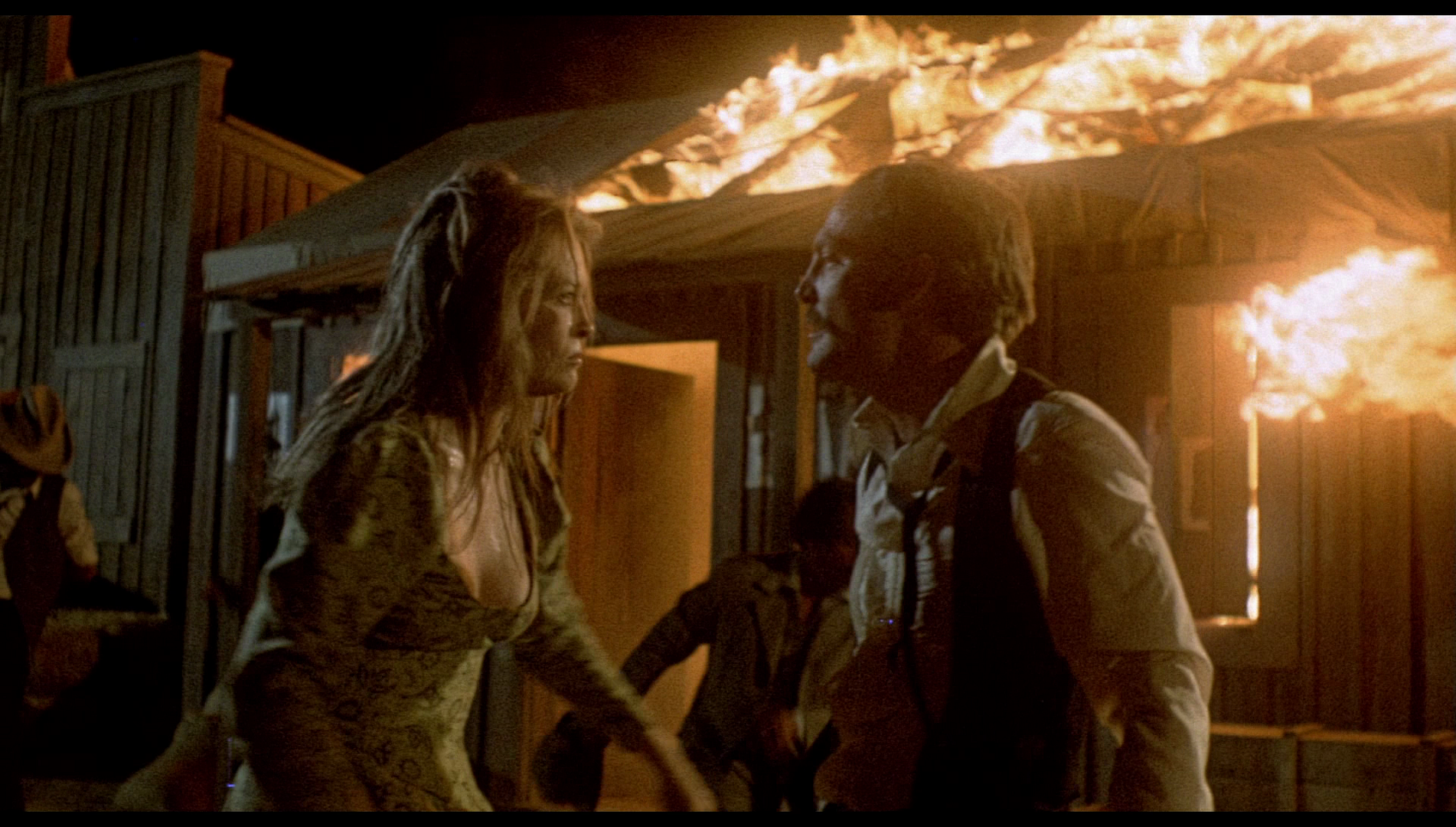 Women tend to be depicted as either whores (‘She looks like she does most of her servin’ with her mouth’, Doc observes in relation to one of the women he and Kate see as they ride into Tombstone) or church-going holier-than-thous. The phrase ‘on the line’ is used to denote those women who work as prostitutes within Tombstone. Partway through the film, Doc makes the decision to take Kate ‘off the line’, snatching her from the saloon and carrying him to his bed. ‘What the hell is this?’, Kate asks. ‘You’re off the line, Kate. I just “retired” you’, Doc tells her. Doc buys a house, into which he and Kate move. However, in a reversal of gender roles which underscores just how unusual and anachronistic Doc and the feisty, independent Kate are, Kate carries Doc across the threshold. Soon, Kate comes under pressure from the ‘respectable’ Women of Tombstone. Alley Earp (Hedy Sontag) approaches Kate and suggests she should go to church. ‘When I want preachin’, I’ll go to church’, Kate responds before adding tauntingly, ‘But for the moment when I’m on my knees, it ain’t in prayer’. Women tend to be depicted as either whores (‘She looks like she does most of her servin’ with her mouth’, Doc observes in relation to one of the women he and Kate see as they ride into Tombstone) or church-going holier-than-thous. The phrase ‘on the line’ is used to denote those women who work as prostitutes within Tombstone. Partway through the film, Doc makes the decision to take Kate ‘off the line’, snatching her from the saloon and carrying him to his bed. ‘What the hell is this?’, Kate asks. ‘You’re off the line, Kate. I just “retired” you’, Doc tells her. Doc buys a house, into which he and Kate move. However, in a reversal of gender roles which underscores just how unusual and anachronistic Doc and the feisty, independent Kate are, Kate carries Doc across the threshold. Soon, Kate comes under pressure from the ‘respectable’ Women of Tombstone. Alley Earp (Hedy Sontag) approaches Kate and suggests she should go to church. ‘When I want preachin’, I’ll go to church’, Kate responds before adding tauntingly, ‘But for the moment when I’m on my knees, it ain’t in prayer’.
Doc’s relationship with Kate causes him to question his allegiance with Wyatt; meanwhile, Kate’s involvement with Doc causes her priorities to shift. ‘I wanted towns, Doc’, Kate tells Holliday, ‘I wanted the light, music, the dancing [….] I got a lot of other things. Some of them was bad [….] After I met you, I didn’t want that life’. ‘What do you want now?’, Holliday asks Kate. ‘I wanna go away with you. Away from this place. For however many years you have left. I wanna have a child’. However, Doc is torn by his allegiance to Wyatt: ‘Part of me wants the same things’, he tells Kate, ‘and part of me wants something else’. In a scene towards the end of the picture, Wyatt confronts Kate over her relationship with Doc; this is the crux of suggestions that Wyatt has an interest in Doc that goes beyond platonic friendship. ‘Ever since you hooked on to him [Doc], he ain’t been himself’, Wyatt tells Kate in reference to Doc’s hesitation to join the Earps against the Clantons. ‘Maybe he grew up’, Kate offers. ‘Maybe the tricks you learned on the line got him so tired he can’t think straight’, suggests Wyatt spitefully, foregrounding his sexual jealousy over Doc and Kate’s love affair. 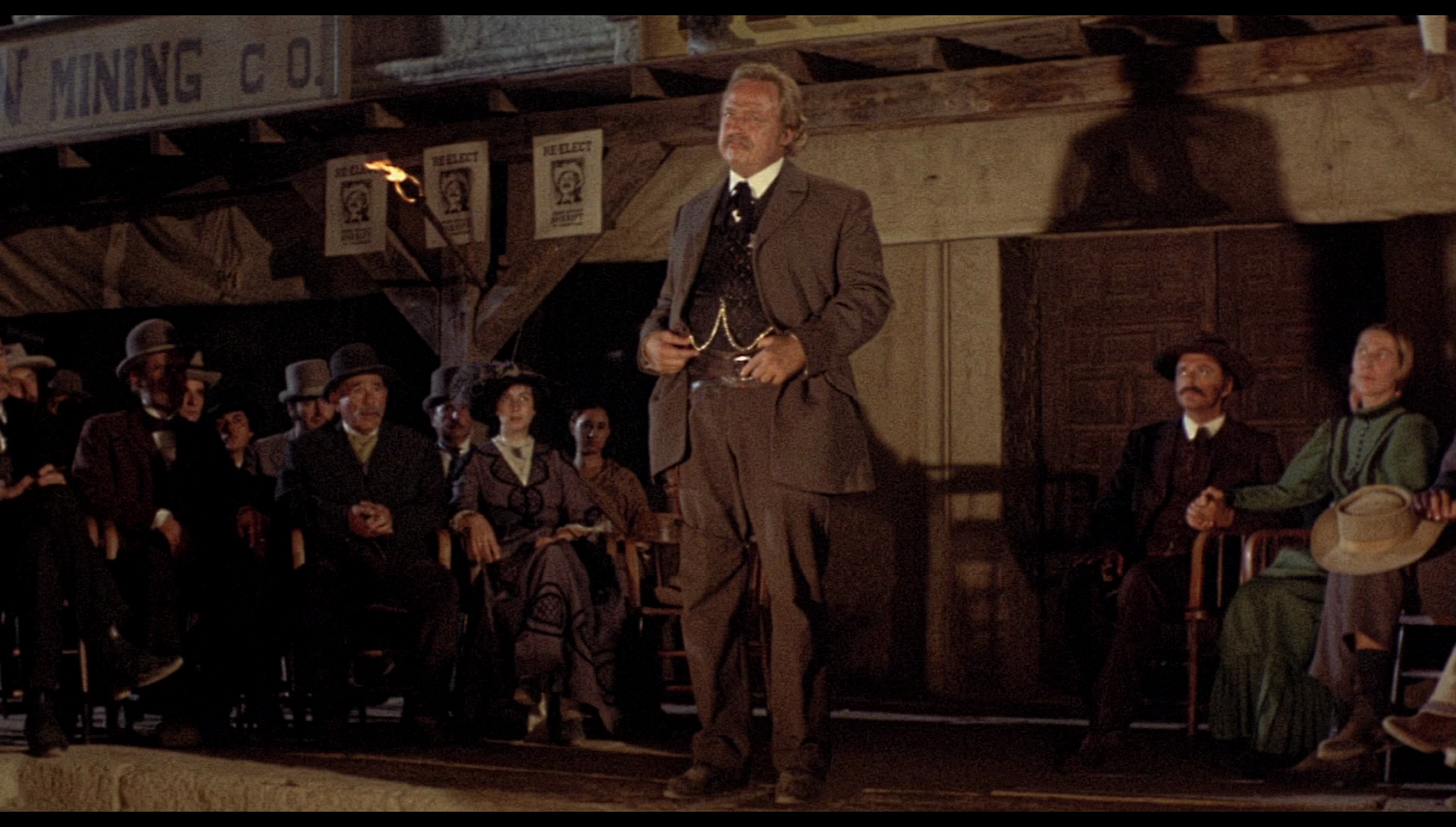 Doc fixes itself to the paradigms of the revisionist Westerns of the era, deflating the romantic associations of Holliday and the Earps and their involvement in Tombstone. As William Luhr has noted, Doc differs from most prior film versions of the story in shifting the focus from Earp to Holliday and paying some attention to ‘the ethnic diversity of Tombstone, particularly the Chinese section of town and its opium dens’ (Luhr, 1996: 30). However, it’s fair to note that many of the earlier screen versions of this legend featured performances and characterisations of Doc Holliday that often eclipsed those of Wyatt Earp. For example, for many viewers and critics Kirk Douglas’ performance as an alcoholic, morose Holliday in John Sturges’ Gunfight at the O K Corral (1957) tends to overshadow that of Burt Lancaster as Earp in the same picture; likewise, the same is true of many later films based on the same events, such as George P Cosmatos/Kurt Russell’s Tombstone (1993), in which Val Kilmer’s Holliday steals every scene in which he appears. (Sturges’ Hour of the Gun, 1967, attempts to redress the mythic balance within his earlier take on the O K Corral legend, with the picture beginning with a more verisimilitudinous depiction of the gunbattle itself before exploring the fallout from those events.) Doc fixes itself to the paradigms of the revisionist Westerns of the era, deflating the romantic associations of Holliday and the Earps and their involvement in Tombstone. As William Luhr has noted, Doc differs from most prior film versions of the story in shifting the focus from Earp to Holliday and paying some attention to ‘the ethnic diversity of Tombstone, particularly the Chinese section of town and its opium dens’ (Luhr, 1996: 30). However, it’s fair to note that many of the earlier screen versions of this legend featured performances and characterisations of Doc Holliday that often eclipsed those of Wyatt Earp. For example, for many viewers and critics Kirk Douglas’ performance as an alcoholic, morose Holliday in John Sturges’ Gunfight at the O K Corral (1957) tends to overshadow that of Burt Lancaster as Earp in the same picture; likewise, the same is true of many later films based on the same events, such as George P Cosmatos/Kurt Russell’s Tombstone (1993), in which Val Kilmer’s Holliday steals every scene in which he appears. (Sturges’ Hour of the Gun, 1967, attempts to redress the mythic balance within his earlier take on the O K Corral legend, with the picture beginning with a more verisimilitudinous depiction of the gunbattle itself before exploring the fallout from those events.)
Like many of the earlier films about the legends surrounding the O K Corral incident, Doc still depicts Wyatt Earp ‘as a figure of controlling masculinity’, but in the version of events posited by Perry and Hamill ‘that masculinity is unattractive and corrupt’ (ibid.). Perry and Hamill reputedly foregrounded the film’s ‘anti’-Western sentiment by referring to Doc as an ‘Eastern Western’ that was made by New Yorkers, and in interview Hamill made explicit the links between Doc and the war in Vietnam (ibid.). Hamill suggested that having visited Vietnam in 1966 as a journalist, he felt that ‘within [Lyndon] Johnson, somewhere deep inside that darkly brilliant, Machiavellian, boorish and devious man there was a Western unspooling. In that Western, the world was broken down into White Hats and Black Hats, Indochina was Dodge City and the Americans were some collective version of Wyatt Earp… The more we looked at the evidence, the clearer it became that the whole myth of the West, the whole legend of its heroes, all of that was a lie’ (Hamill, quoted in ibid.: 30-1). 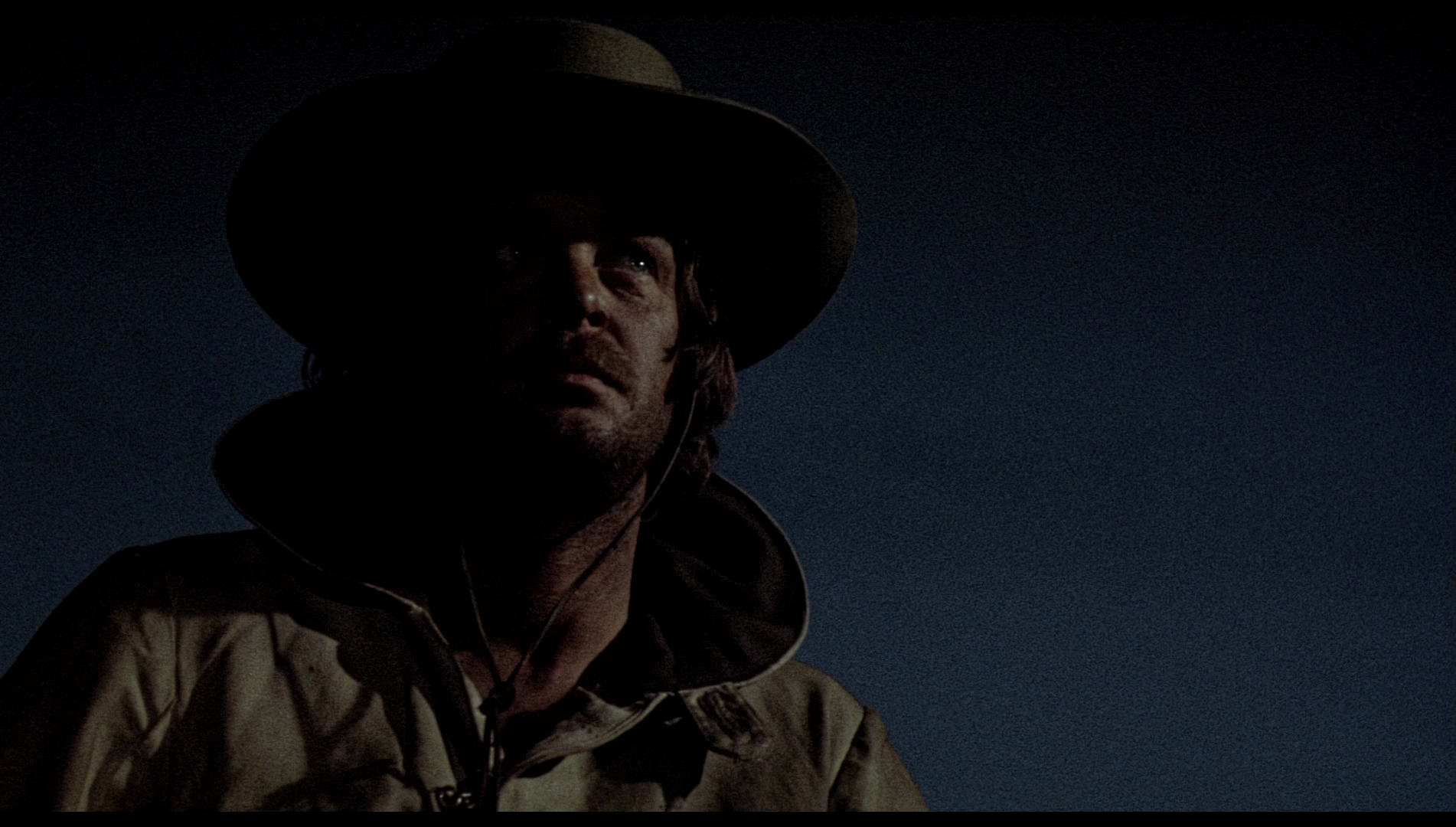 Upon Doc’s initial release, reviews were predominantly negative in tone, with some critics objecting to the film’s subtle suggestion that Harris Yulin’s Wyatt Earp harbours a concealed romantic or sexual desire for Stacy Keach’s Holliday. Some critics saw parallels between Yulin’s portrayal of Earp and then-president of the US Richard Nixon. (Though Hamill’s intent in writing the film was avowedly political, and he planned the script as an allegory for America’s involvement in Vietnam, he reputedly wrote Earp more as a stand-in for Lyndon B Johnson than Nixon.) Shirley Ayn Linder, in her book about literary and filmic portrayals of Holliday, argues that Perry’s film ‘was not content with merely debunking the by-now revered cast of the Tombstone scenario; had their names been withheld from Pete Hamill’s original screenplay, it is doubtful they would have been realized’ (Linder, 2014: 113). Linder criticises the fact that ‘no psychological reason is ever given for the violence’ in the picture – though even a cursory glance at the picture shows its engagement with the sociology of violence in the service of power and politics – whilst Holliday and Earp are involved in an ‘a foggy, drug-addicted and obviously homosexual relationship’ (ibid.). The sticking point for Linder appears to be the fact that the ‘bizarre presentation’ of Doc was ‘allegedly a statement against Lyndon Johnson, the Vietnam War, and a national self-righteous spirit’ (ibid.). Linder’s denouncement of the picture seems to characterise much of the loaded criticism of Doc, both at the time of its original release and since, in the sense that a disagreement with Hamill and Perry’s overtly allegorical approach and openly political stance is deflected onto suggestions that Wyatt Earp may have been something other than heterosexual, that Doc may have taken opium, and that Holliday and Katie Elder ‘jar the viewer with obscenities and brutality’ (ibid.). To some extent, the vociferous arguments against Doc are mirrored in critics’ reactions to a number of other revisionist Westerns of the same period, especially those that attempted to allegorise the ongoing Vietnam War, and particularly the westerns all’italiana of the 1960s – with the use of the pejorative name ‘Spaghetti Westerns’, which has since been accepted and recuperated by fans of the films themselves, originally intended to ridicule these ‘un-Western Westerns’. Upon Doc’s initial release, reviews were predominantly negative in tone, with some critics objecting to the film’s subtle suggestion that Harris Yulin’s Wyatt Earp harbours a concealed romantic or sexual desire for Stacy Keach’s Holliday. Some critics saw parallels between Yulin’s portrayal of Earp and then-president of the US Richard Nixon. (Though Hamill’s intent in writing the film was avowedly political, and he planned the script as an allegory for America’s involvement in Vietnam, he reputedly wrote Earp more as a stand-in for Lyndon B Johnson than Nixon.) Shirley Ayn Linder, in her book about literary and filmic portrayals of Holliday, argues that Perry’s film ‘was not content with merely debunking the by-now revered cast of the Tombstone scenario; had their names been withheld from Pete Hamill’s original screenplay, it is doubtful they would have been realized’ (Linder, 2014: 113). Linder criticises the fact that ‘no psychological reason is ever given for the violence’ in the picture – though even a cursory glance at the picture shows its engagement with the sociology of violence in the service of power and politics – whilst Holliday and Earp are involved in an ‘a foggy, drug-addicted and obviously homosexual relationship’ (ibid.). The sticking point for Linder appears to be the fact that the ‘bizarre presentation’ of Doc was ‘allegedly a statement against Lyndon Johnson, the Vietnam War, and a national self-righteous spirit’ (ibid.). Linder’s denouncement of the picture seems to characterise much of the loaded criticism of Doc, both at the time of its original release and since, in the sense that a disagreement with Hamill and Perry’s overtly allegorical approach and openly political stance is deflected onto suggestions that Wyatt Earp may have been something other than heterosexual, that Doc may have taken opium, and that Holliday and Katie Elder ‘jar the viewer with obscenities and brutality’ (ibid.). To some extent, the vociferous arguments against Doc are mirrored in critics’ reactions to a number of other revisionist Westerns of the same period, especially those that attempted to allegorise the ongoing Vietnam War, and particularly the westerns all’italiana of the 1960s – with the use of the pejorative name ‘Spaghetti Westerns’, which has since been accepted and recuperated by fans of the films themselves, originally intended to ridicule these ‘un-Western Westerns’.
In her autobiography Looking for Gatsby, Faye Dunaway discusses the suggestion in the picture that Wyatt Earp may be gay. Dunaway says that both Keach and Yulin were a little upset that ‘Hamill was taking liberties with an important genre—the Western—and a mythology distinctively American’ (Dunaway, 1995: 208-9). According to Dunaway, Keach and Yulin saw the suggestion of a ‘homosexual liaison’ between Earp and Holliday ‘as yet another cheap shot to these Western heroes, who had no way of fighting back’ (ibid.: 209). The two actors responded by ‘dismantling the script, a page at a time’ and making suggestions to Perry, which Perry would accommodate with the result that ‘the scene would fall flat’ (ibid.). For his part, Keach commented in his autobiography All in All: An Actor’s Life On and Off the Stage that Hamill’s screenplay for Doc was ‘wonderfully poetic’ but ‘I don’t think the director Frank Perry truly got it’ (Keach, 2013: 79). Perry ‘was great with images but not so strong on behavior’ (ibid.). Yulin and Keach ‘deliberately underplayed our characters’ with the intention that the performances would ‘move away from mythmaking toward a realism that would provide grounding for Hamill’s impressionistic writing’ (ibid.). However, for Keach, Perry failed to ‘appreciate’ these ‘understated’ performance, resulting in a completed picture that ‘feels out of sync with the events it depicts’ (ibid.). 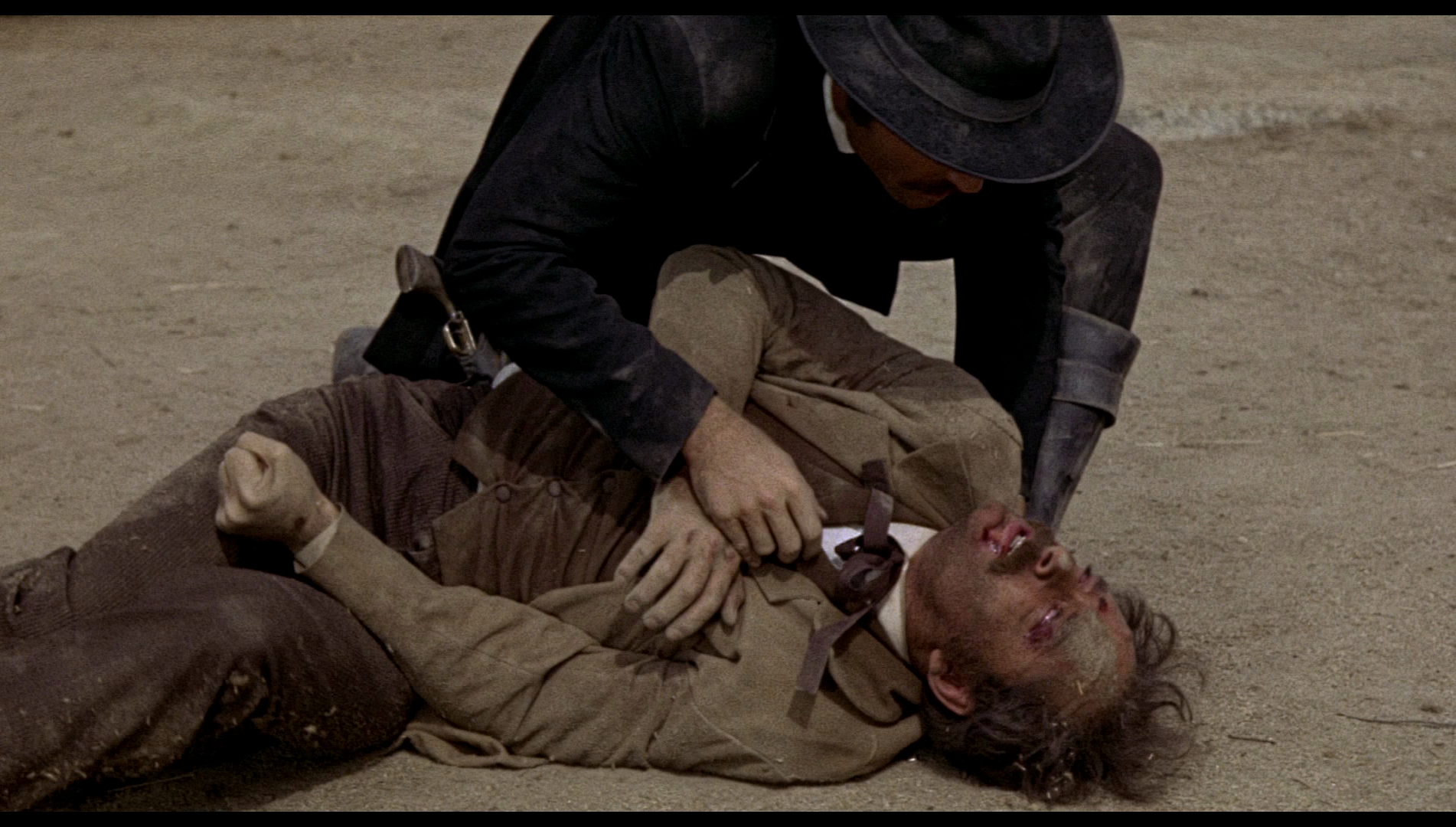 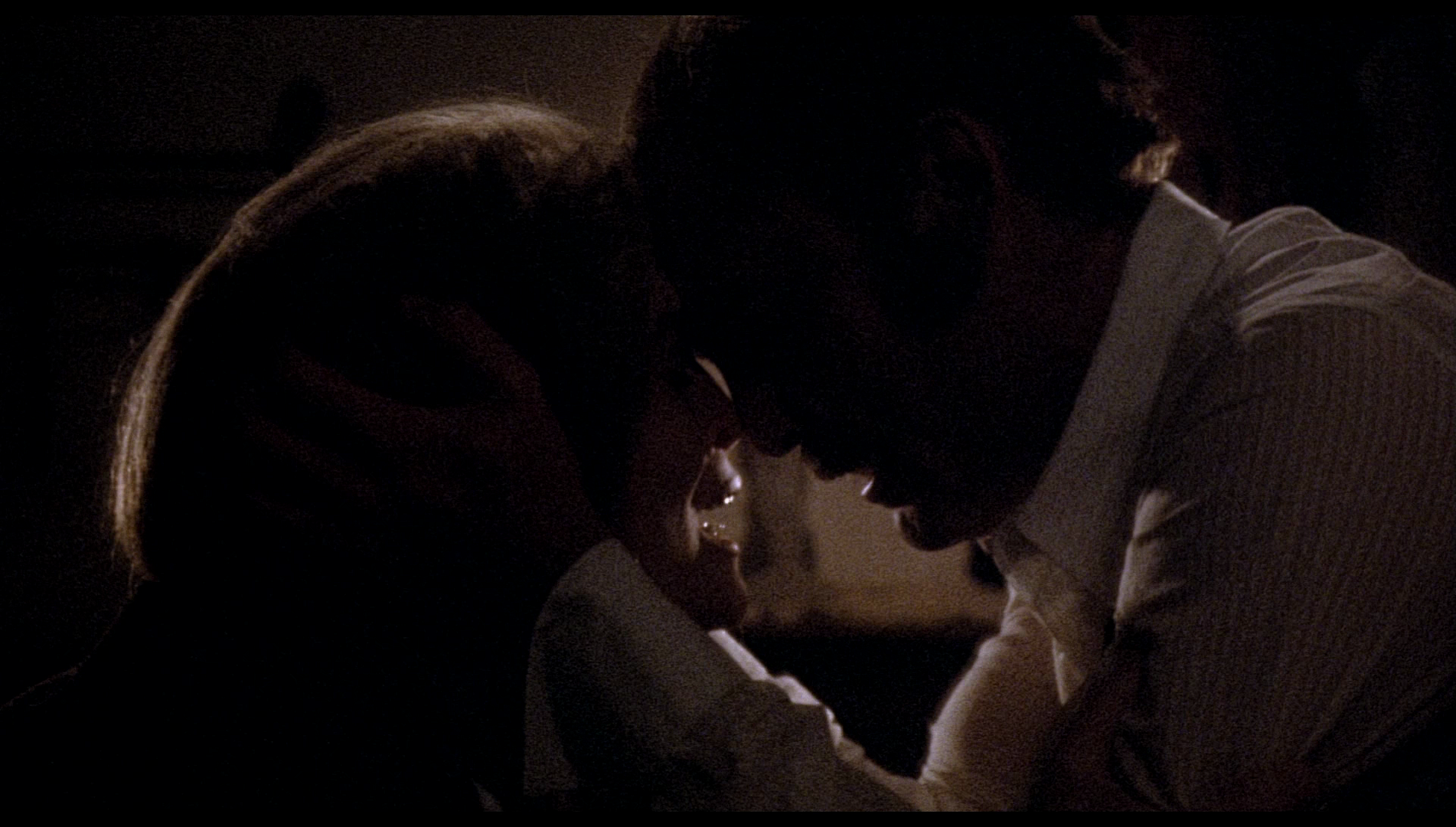 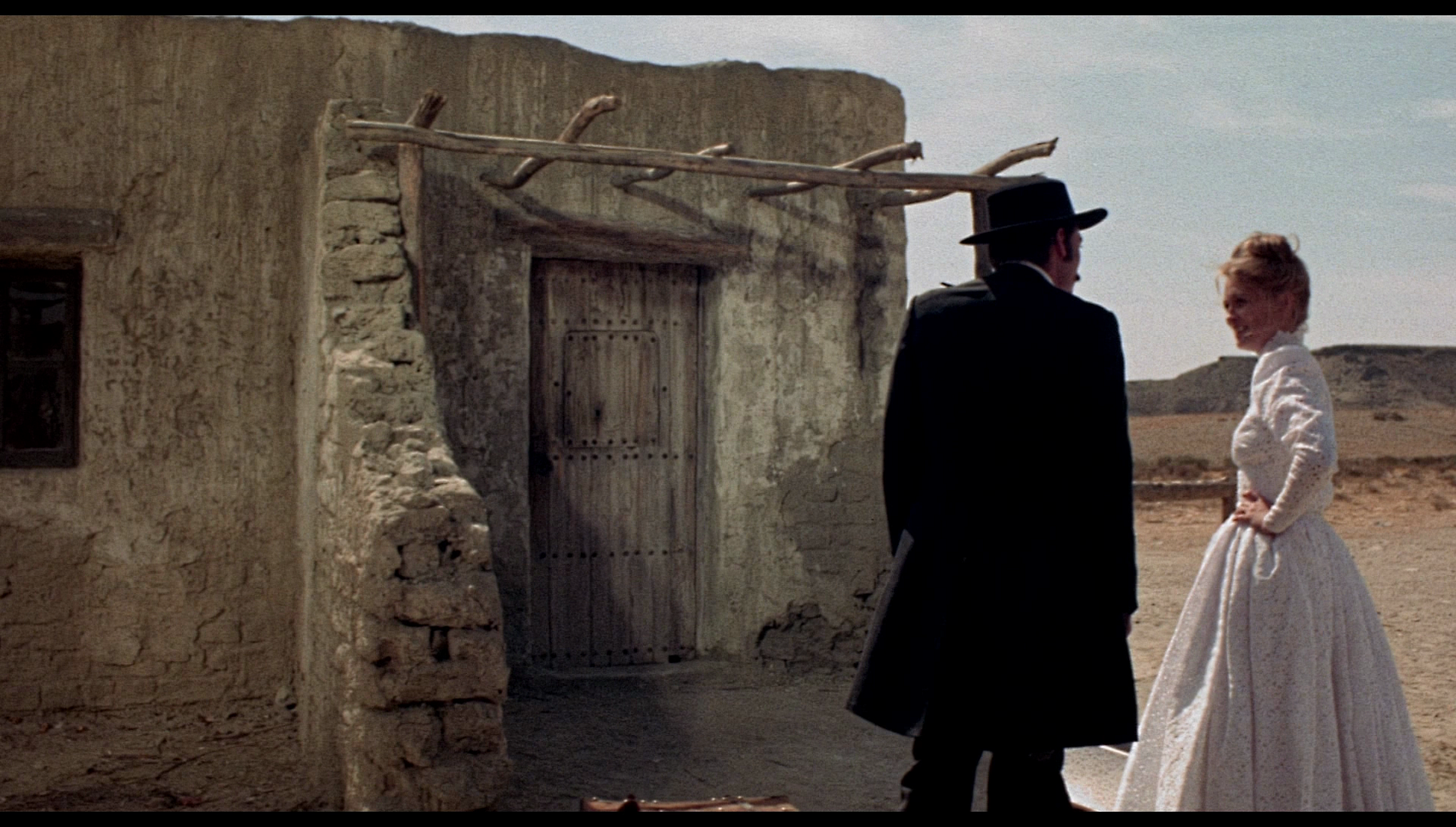
Video
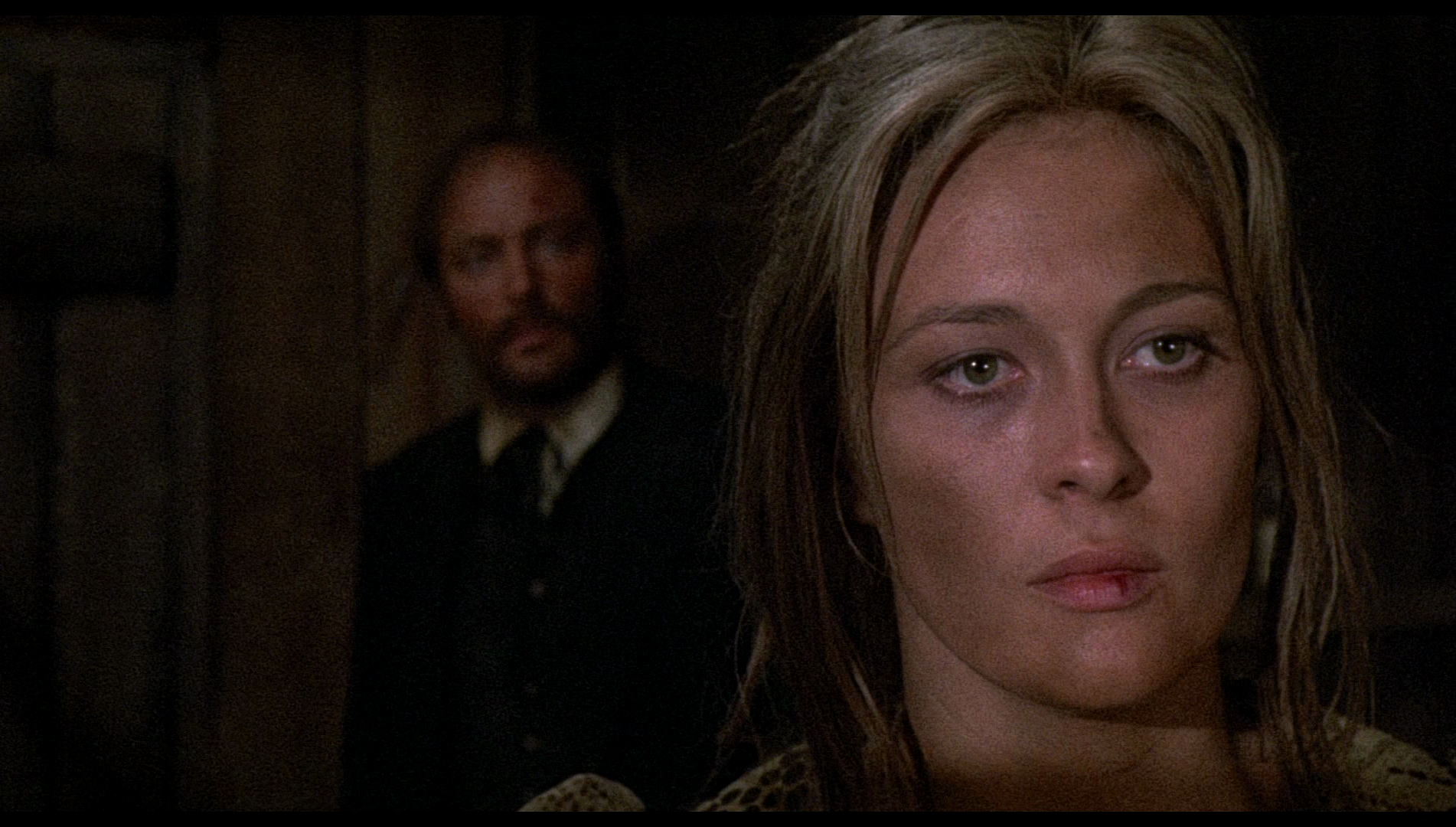 Filling approximately 19Gb of space on its disc, Doc is presented in 1080p using the AVC codec. The film is presented in its original aspect ratio of 1.85:1. The earthy tones of the original photography are communicated impressively here. There’s also some very good pre-De Palma use of split diopter lenses in many of the film’s low light sequences, with a character’s face often framed in the foreground whilst other characters are seen either reacting to what they say or turning away from them in the background. It’s a film with a dusty, dirty aesthetic, much of it shot in low light by film stock that, by modern standards, struggles to keep up with the lighting conditions; there are thankfully no overt signs of destructive digital tinkering in this Blu-ray presentation. The coarse structure of the picture is expressed very well through a robust encode, which ensures that the film retains the texture of 35mm film. There’s an excellent level of detail within this presentation: the sweat glistening on Doc’s brow in the opening sequence is evident, for example. Lighting is very ‘old Hollywood’, with strong beams of directed light (presumably cast by ‘inkys’) in interior sequences. Contrast levels are also very good: in the low-light sequences cited above, faces are lit with their surrounding tapering off into shadow. Filling approximately 19Gb of space on its disc, Doc is presented in 1080p using the AVC codec. The film is presented in its original aspect ratio of 1.85:1. The earthy tones of the original photography are communicated impressively here. There’s also some very good pre-De Palma use of split diopter lenses in many of the film’s low light sequences, with a character’s face often framed in the foreground whilst other characters are seen either reacting to what they say or turning away from them in the background. It’s a film with a dusty, dirty aesthetic, much of it shot in low light by film stock that, by modern standards, struggles to keep up with the lighting conditions; there are thankfully no overt signs of destructive digital tinkering in this Blu-ray presentation. The coarse structure of the picture is expressed very well through a robust encode, which ensures that the film retains the texture of 35mm film. There’s an excellent level of detail within this presentation: the sweat glistening on Doc’s brow in the opening sequence is evident, for example. Lighting is very ‘old Hollywood’, with strong beams of directed light (presumably cast by ‘inkys’) in interior sequences. Contrast levels are also very good: in the low-light sequences cited above, faces are lit with their surrounding tapering off into shadow.
The film runs for 95:57 mins. When originally released at cinemas in the UK, the film was cut quite severely for violence; those cuts have since been waived. However, a very brief 5 second BBFC-imposed cut to a shot of a cockfight, cut according to the 1937 Cinematograph (Animals) Act, has persisted in all home video versions of the film released since the BBFC first passed the picture for home video in 1988. This new Blu-ray release from Signal One is intact in terms of violence but continues to omit the 5 second shot of the cockfight.
Audio
Audio is presented via a LPCM 1.0 mono track, in English. This track is clear throughout, with dialogue audible at all points in the film. It demonstrates good range and is ‘punchy’ where it needs to be (eg, in the gunshots during the gunfight at the O K Corral). Optional English subtitles for the Hard of Hearing are provided. These are easy to read and free from any issues.
Extras
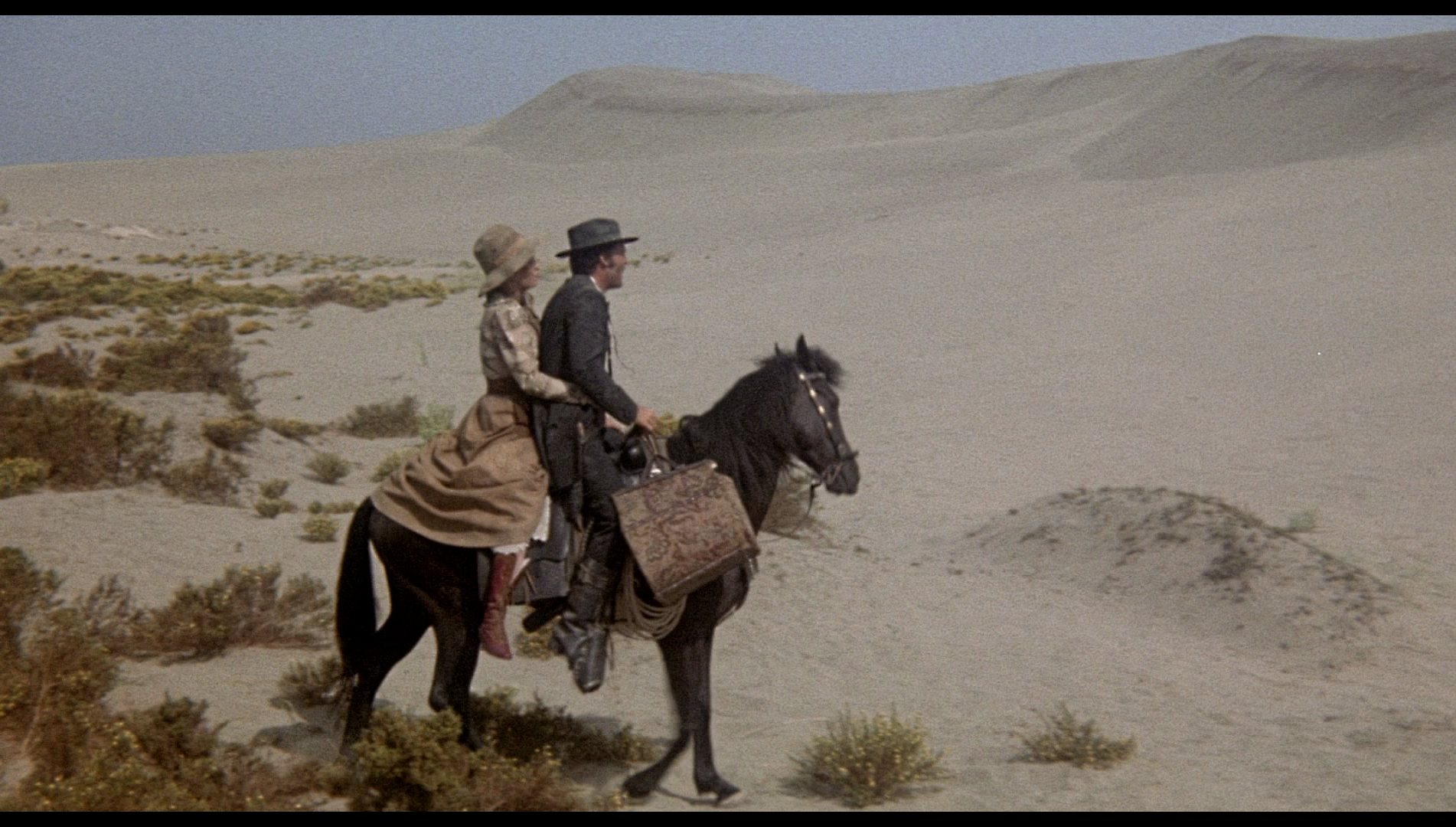 - Audio commentary with C Courtney Joyner. In this commentary, Joyner, the writer of a number of Westerns (and Charles Band films), discusses Doc. Joyner has provided commentaries for a number of DVD and Blu-ray releases of Italian Westerns. This is a thoroughly-researched commentary which engages with the reception that the film received upon its original release and talks about its representation of the historical events depicted within it. - Audio commentary with C Courtney Joyner. In this commentary, Joyner, the writer of a number of Westerns (and Charles Band films), discusses Doc. Joyner has provided commentaries for a number of DVD and Blu-ray releases of Italian Westerns. This is a thoroughly-researched commentary which engages with the reception that the film received upon its original release and talks about its representation of the historical events depicted within it.
- Faye Dunaway Guardian interview. Conducted in 1980, this audio recording of an interview with Dunaway by Alexander Walker, recorded in front of a live audience at the NFT, is presented over the film itself. It’s an interesting interview, which focuses on Dunaway’s career generally, and encompasses reflections on her approach to acting and some of the roles she had, by that point in her career, taken. - ‘Truth be Told’ (19:55). This is a new interview with Stacy Keach, conducted in 2015. Keach reflects on the ways in which Doc differed from the Westerns that had gone before it, and the attempt within the film to shatter romanticised myths of the West. Central to the film’s depiction of Holliday, Keach suggests, is the ‘fish out of water’ depiction of the character. Keach was approached to act in the film after Perry and his wife saw him act in the Broadway production of Arthur Kopit’s play Indians. Keach reflects in detail on the production of the film and his working relationships with the rest of the cast, including the affair between Yulin and Dunaway – which began on set and came to a head when Dunaway’s lover Marcello Mastroianni arrived on the film’s set. - ‘Outside the System’ (24:33). This is a newly-recorded interview with Alan Heim, the celebrated film editor for whom Doc was one of his first films. Heim discusses his understanding of the film and his excitement at editing a gun battle. He talks about his work as a sound effects editor during the 1960s, and his decision to move into film editing. Heim reflects in some detail on the issues he faced in editing the picture, and he also talks at length about Perry’s approach to work and the film’s production. - A gallery of stills, posters and lobby cards (0:17). - Trailer (2:46).
Overall
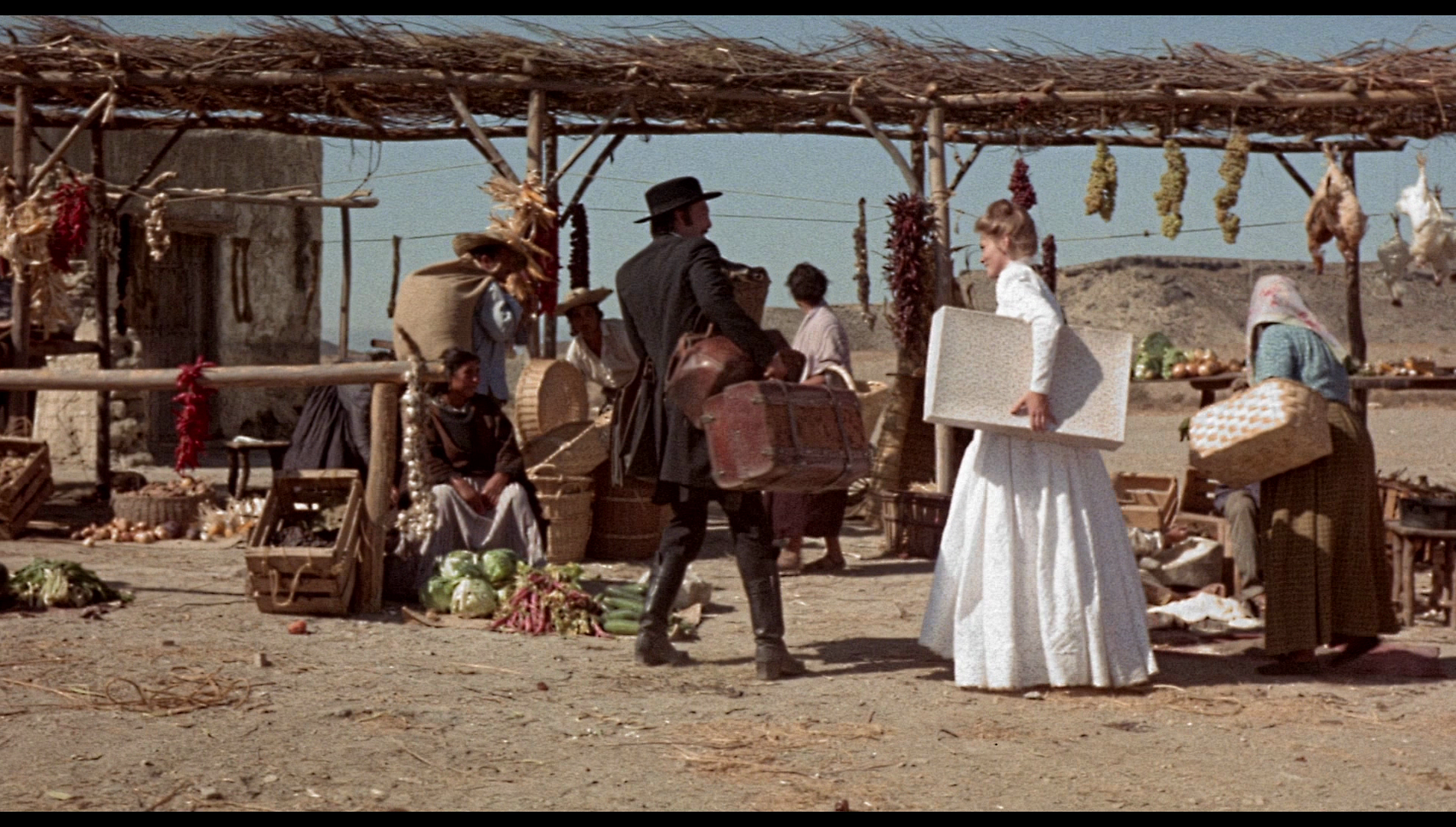 Doc, like many other revisionist or ‘anti’-Westerns of the era, is a deeply divisive film, with some viewers and critics feeling that it is disrespectful to the historical figures and the legends that surround them. Hamill’s intent in writing the film was overtly political, and this seems to be a sticking point for many of the film’s critics. It’s an interesting film, made in a year when a number of very good revisionist Westerns were produced and released, including Altman’s McCabe and Mrs Miller, Peter Fonda’s Hired Hand (1971), Don Siegel’s The Beguiled (1971), Michael Winner’s Lawman (1971) and John Huston’s The Life and Times of Judge Roy Bean (1972). Like many of those other revisionist Westerns, within Doc there’s a hint of fatalism, the suggestion that people are trapped within the roles they are given or have been born into. Doc is unable to escape from his reputation as a gunfighter; he discusses this obliquely in an exchange with Kate. ‘How’d you get to be a gambler, Doc?’, Kate asks him at one point. ‘Just something I picked up along the way’, he replies, ‘Like everything else [….] How’d you get to be on the line?’ ‘I was born to it’, Kate replies. ‘You mean whores are born not made?’, Doc jokes. Doc, like many other revisionist or ‘anti’-Westerns of the era, is a deeply divisive film, with some viewers and critics feeling that it is disrespectful to the historical figures and the legends that surround them. Hamill’s intent in writing the film was overtly political, and this seems to be a sticking point for many of the film’s critics. It’s an interesting film, made in a year when a number of very good revisionist Westerns were produced and released, including Altman’s McCabe and Mrs Miller, Peter Fonda’s Hired Hand (1971), Don Siegel’s The Beguiled (1971), Michael Winner’s Lawman (1971) and John Huston’s The Life and Times of Judge Roy Bean (1972). Like many of those other revisionist Westerns, within Doc there’s a hint of fatalism, the suggestion that people are trapped within the roles they are given or have been born into. Doc is unable to escape from his reputation as a gunfighter; he discusses this obliquely in an exchange with Kate. ‘How’d you get to be a gambler, Doc?’, Kate asks him at one point. ‘Just something I picked up along the way’, he replies, ‘Like everything else [….] How’d you get to be on the line?’ ‘I was born to it’, Kate replies. ‘You mean whores are born not made?’, Doc jokes.
Though the film may be deeply divisive, Signal One’s presentation is not. It’s an undeniably good presentation of the film, supported with some excellent contextual material. The 5 second BBFC-imposed cut to the shot of a cockfight is worth mentioning, but it’s a very, very minor issue (without knowing exactly where it is, it would be impossible to spot) and hardly mitigates the various strengths of this release. This is most definitely the best release Doc has had to date, and is likely to be the best release of the picture for years to come. References: Dunaway, Faye, 1995: Looking for Gatsby: My Life. London: Pocket Books Keach, Stacy, 2013: All in All: An Actor’s Life On and Off the Stage. Connecticut: Lyons Press Linder, Sherley Ayn, 2014: Doc Holliday in Film and Literature. London: McFarland Luhr, William, 1996: ‘Reception, Representation, and the O K Corral: Shifting Images of Wyatt Earp’. In: Braendlin, Bonnie & Braendlin, Hans P (eds), 1996: Authority and Transgression in Literature and Film. University Press of Florida: 23-44 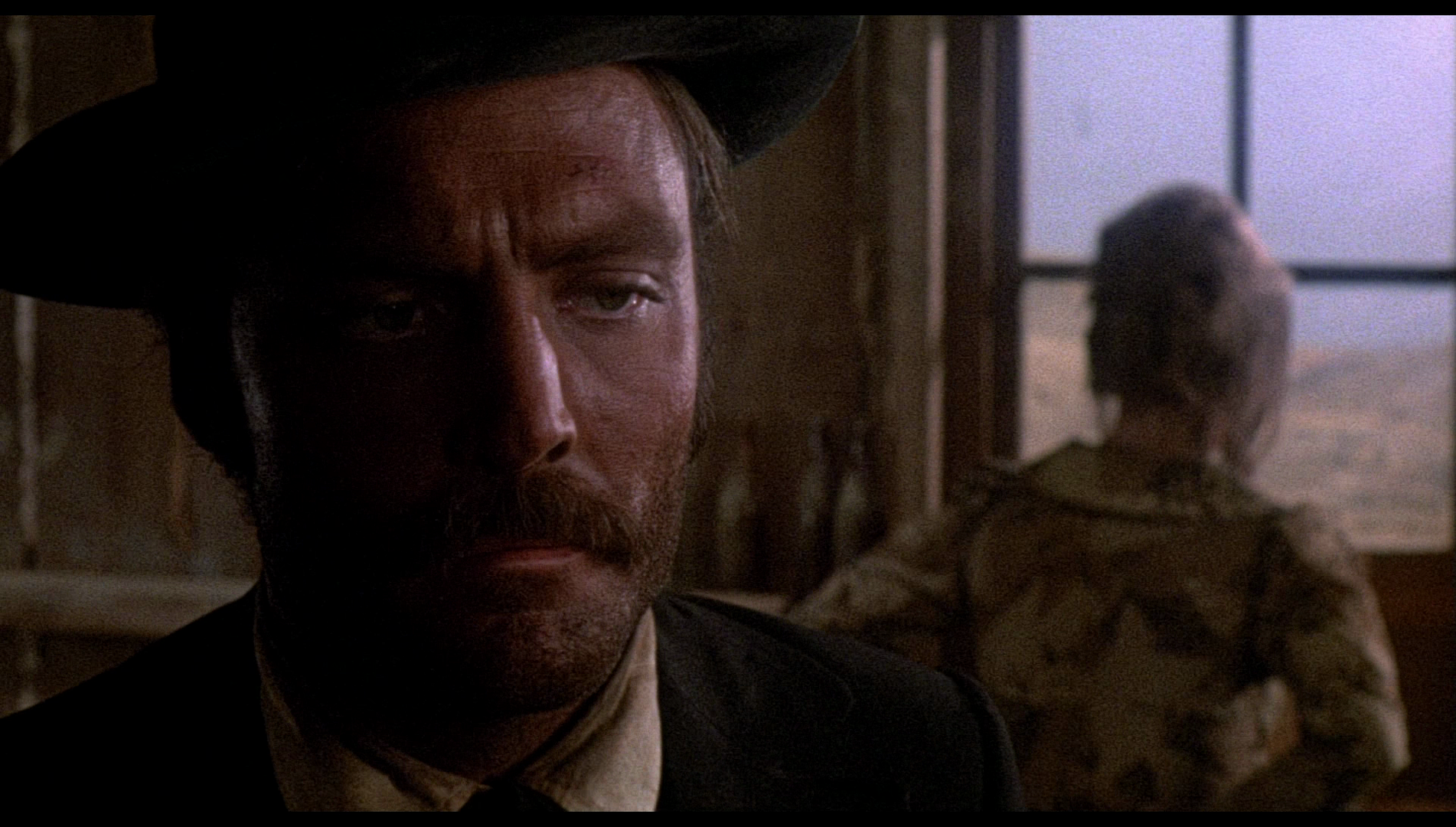
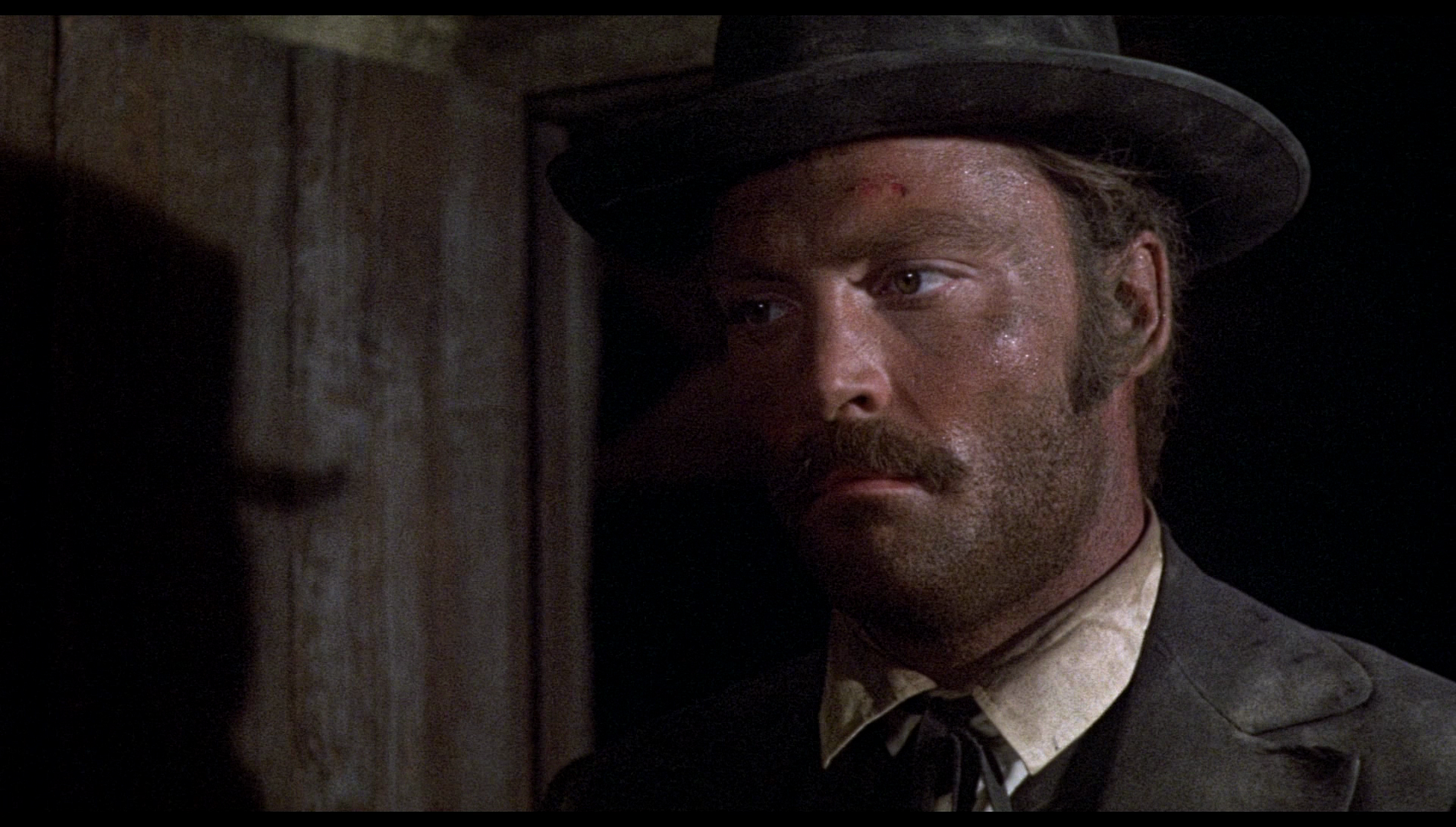
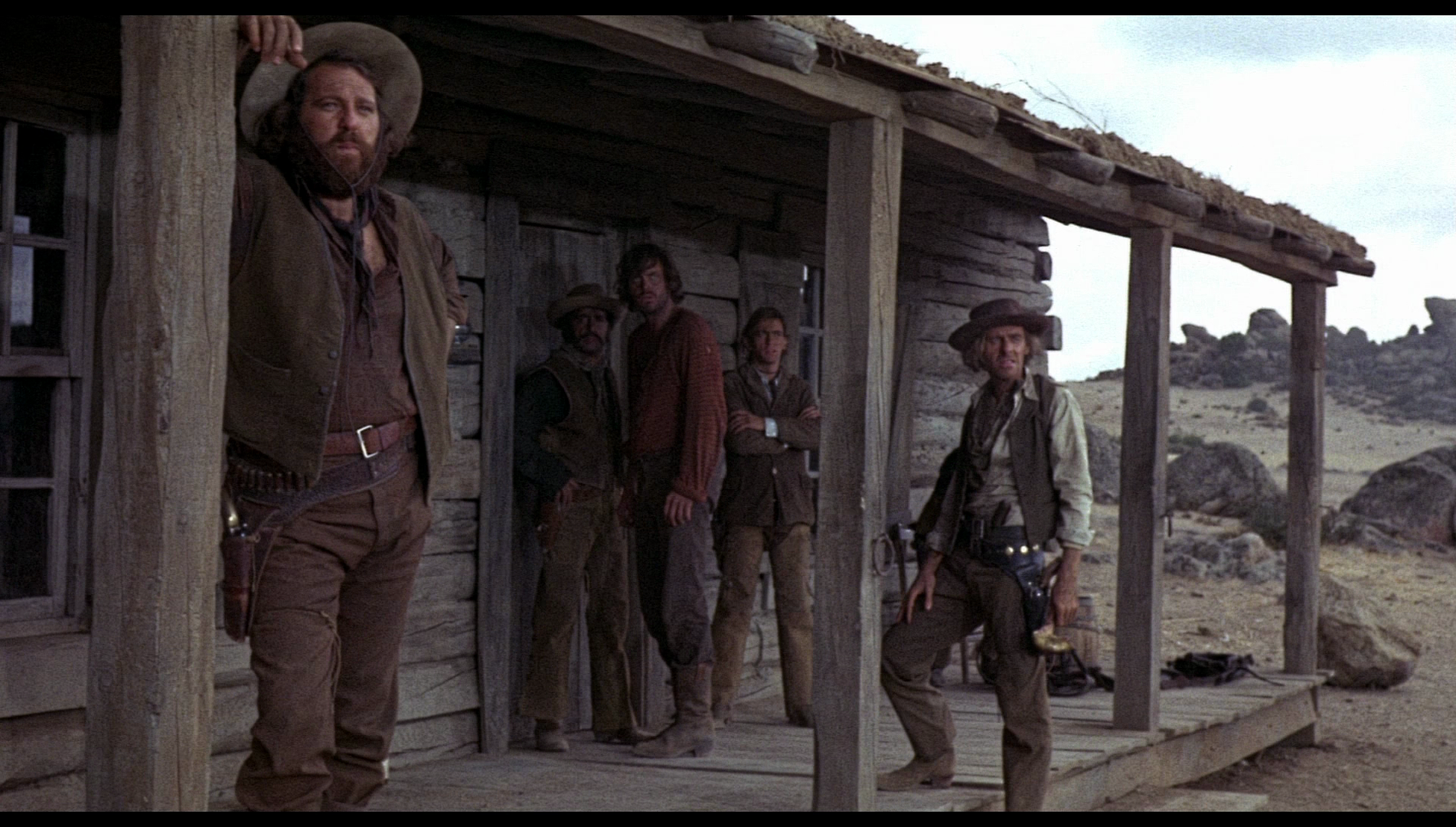
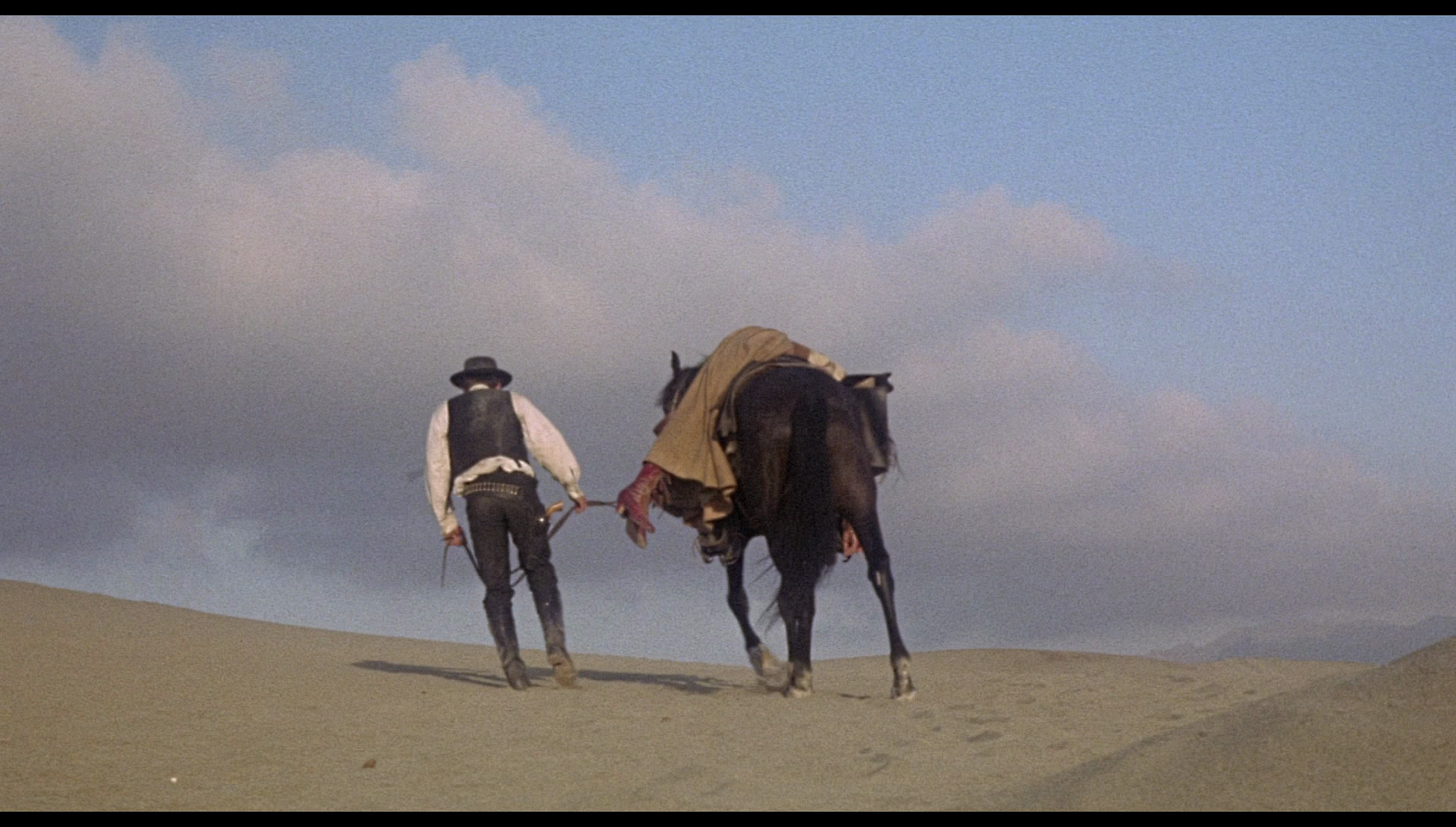

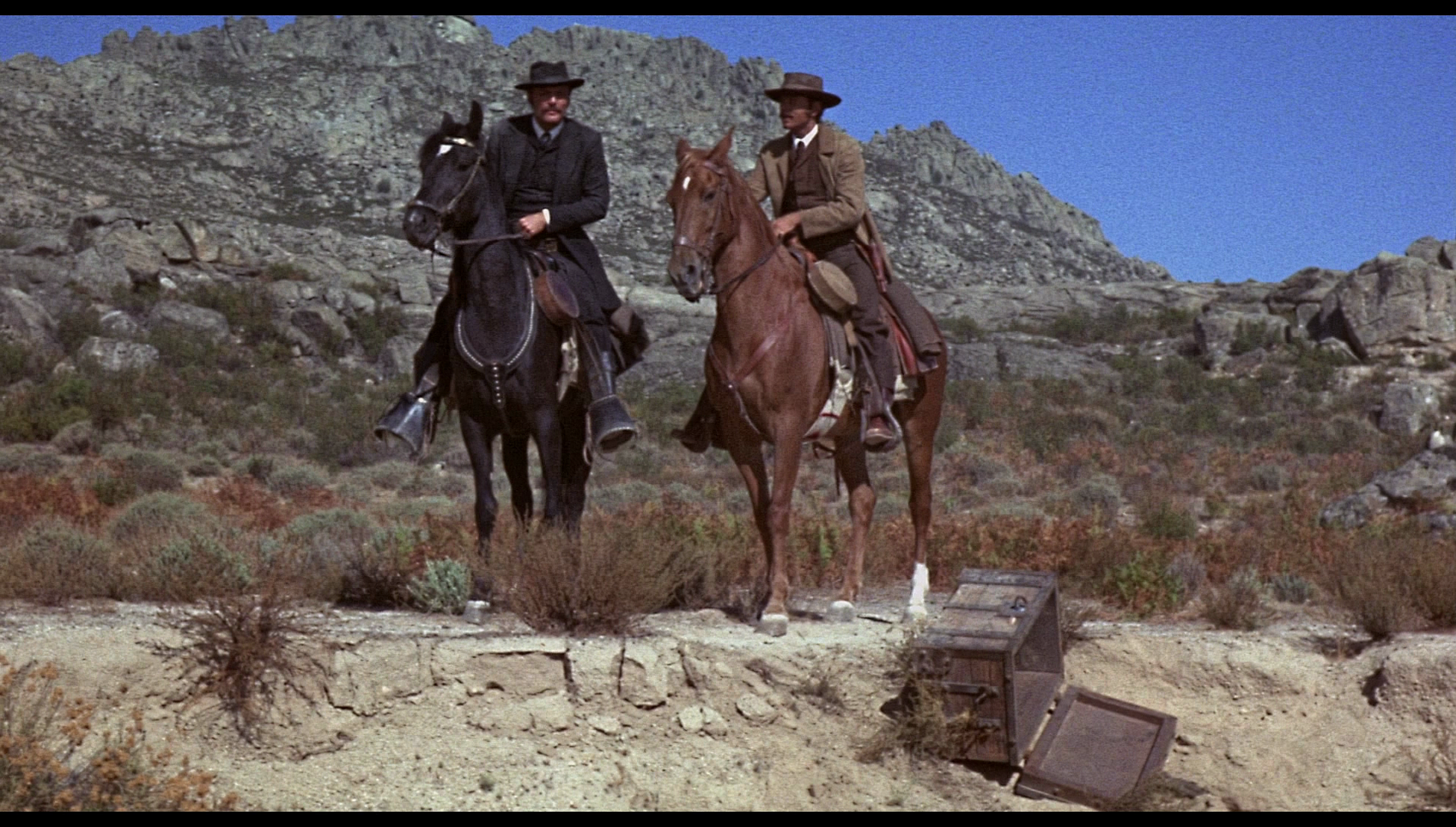
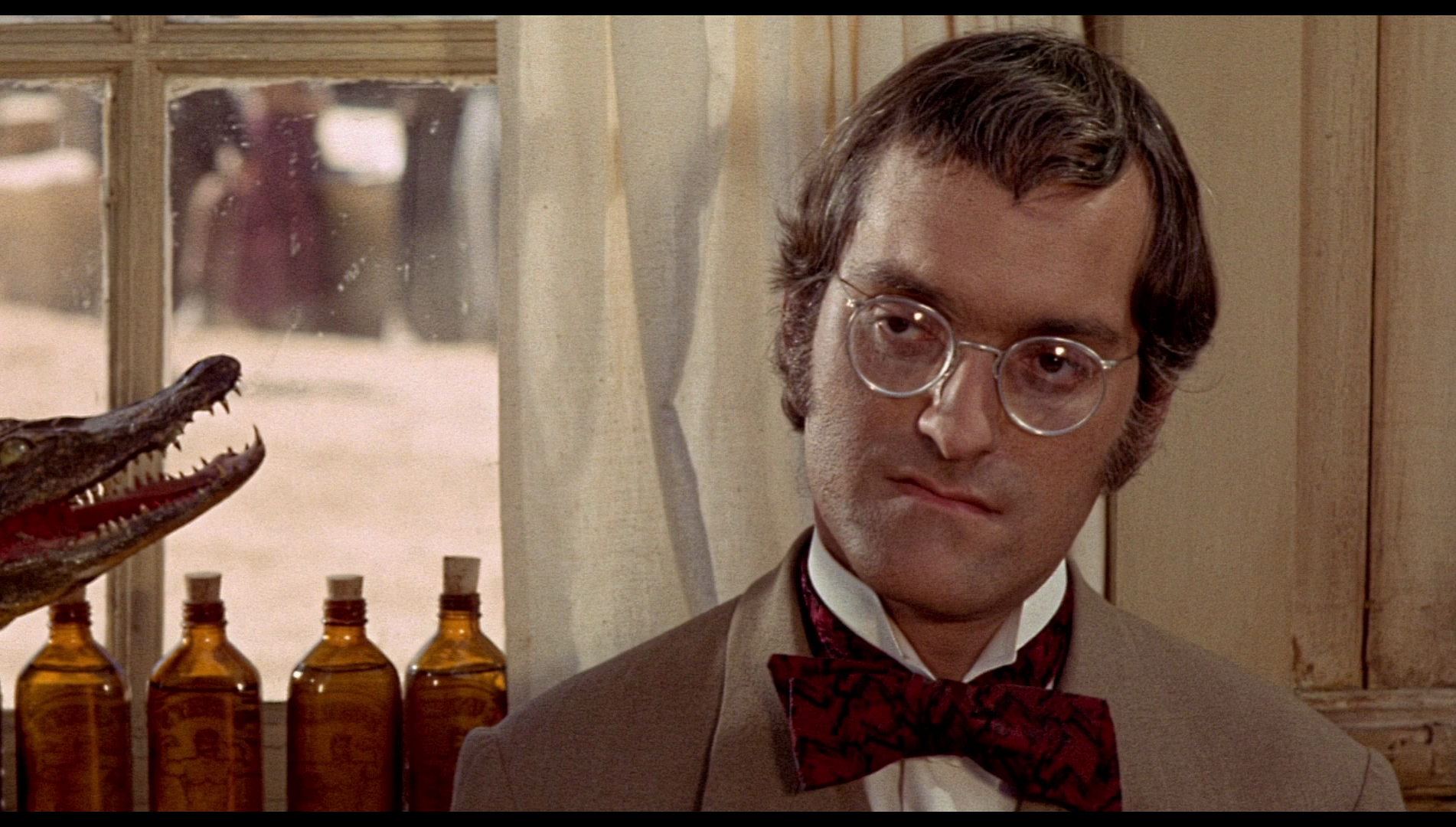
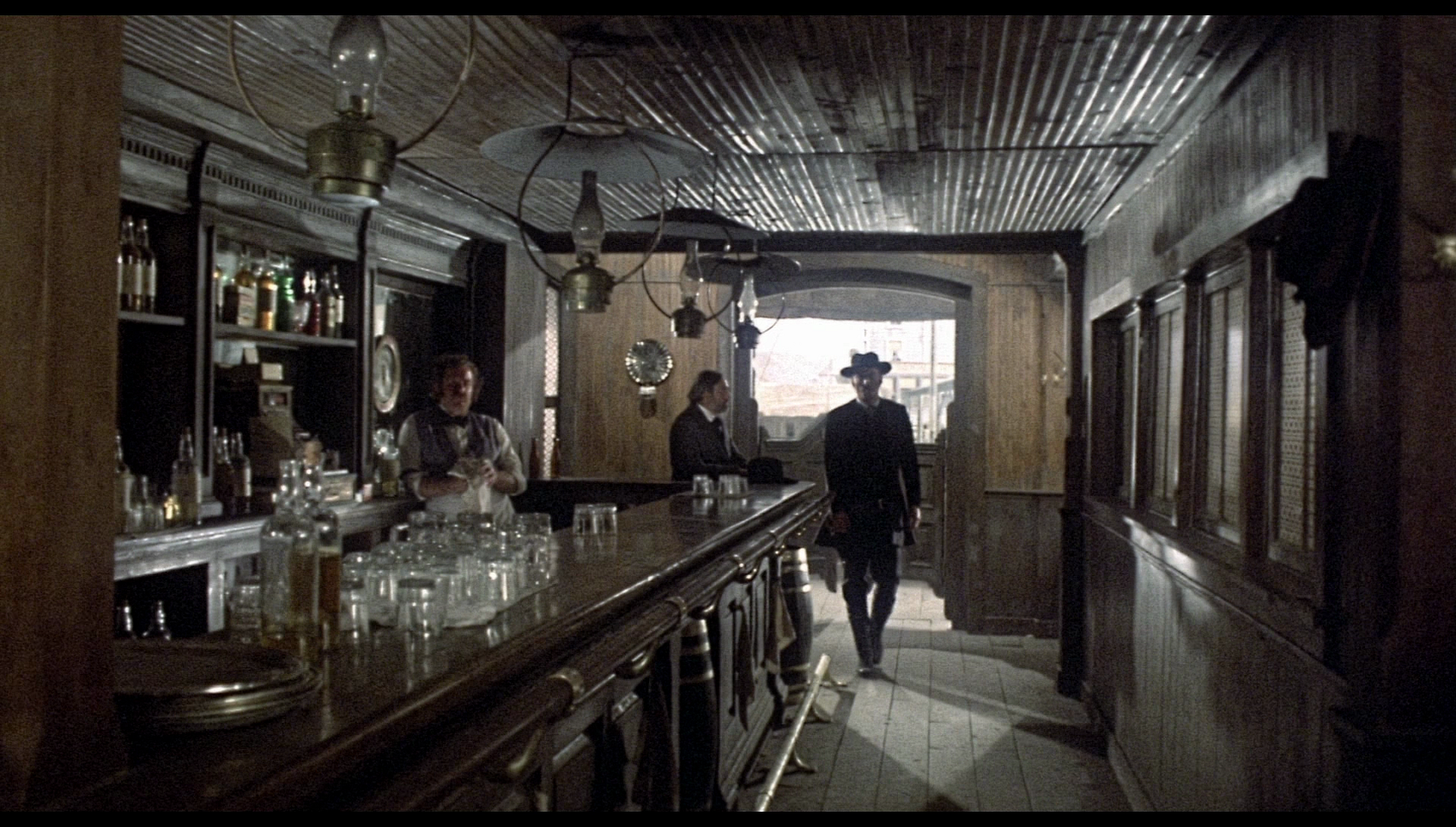
|
|||||

|